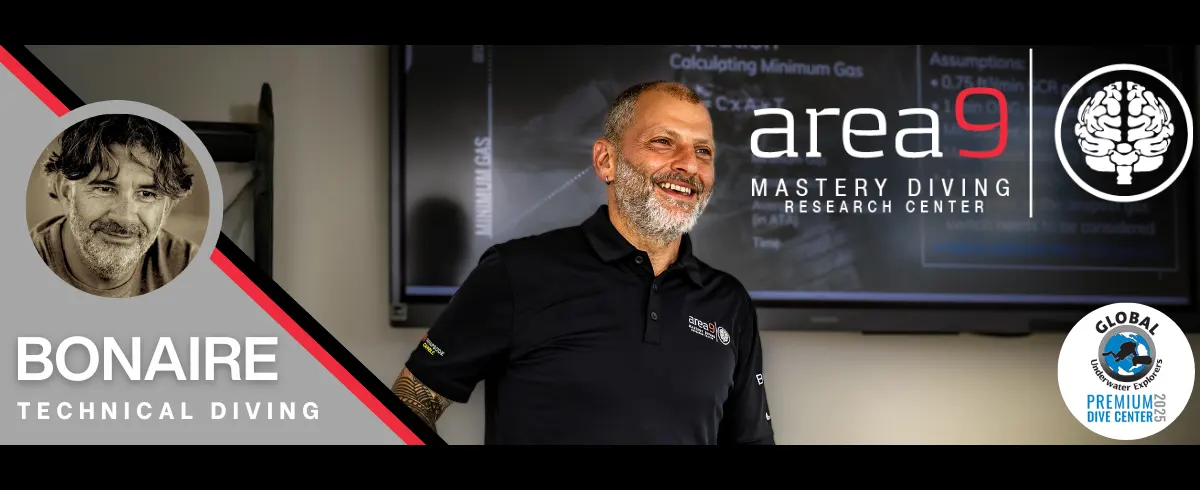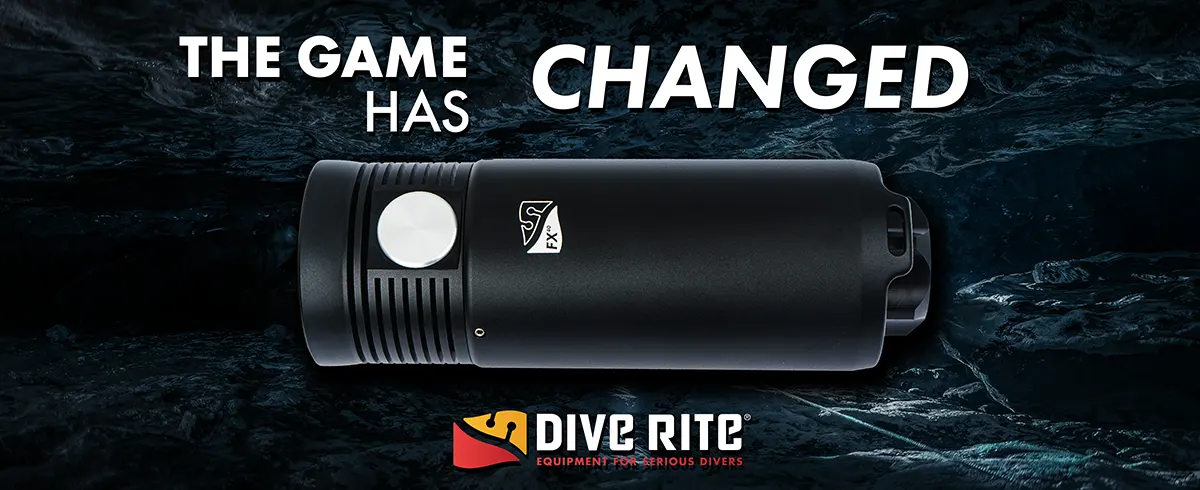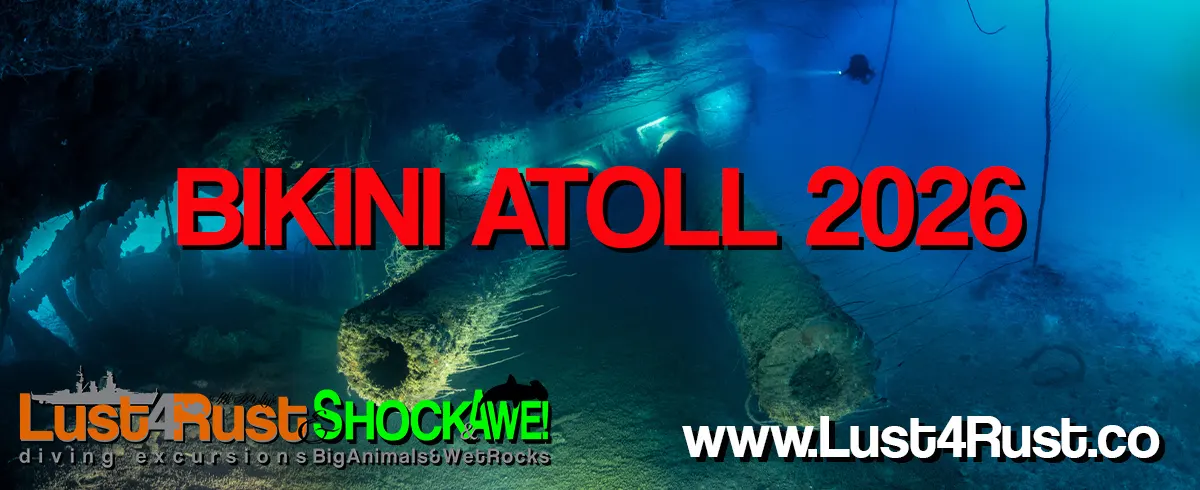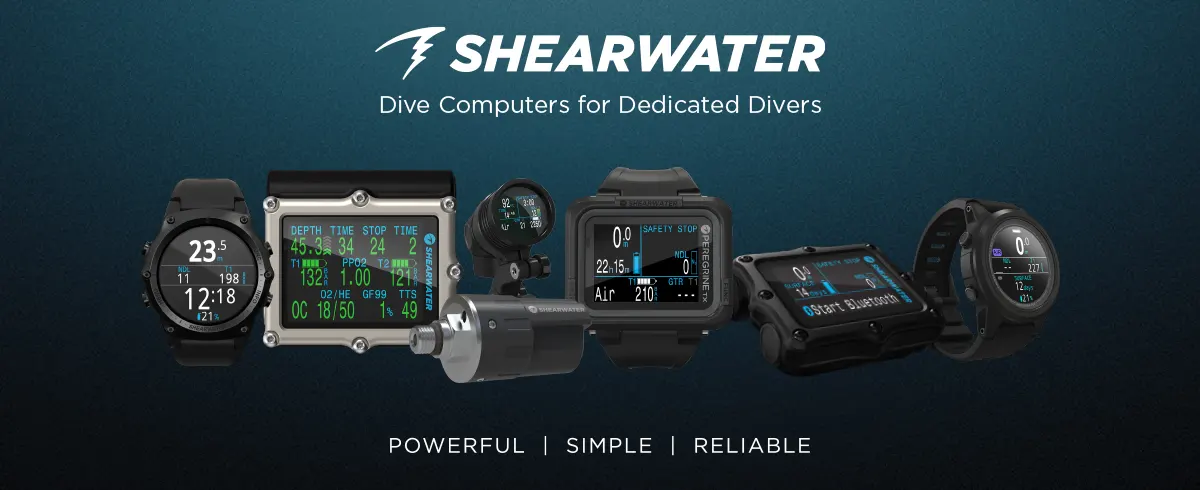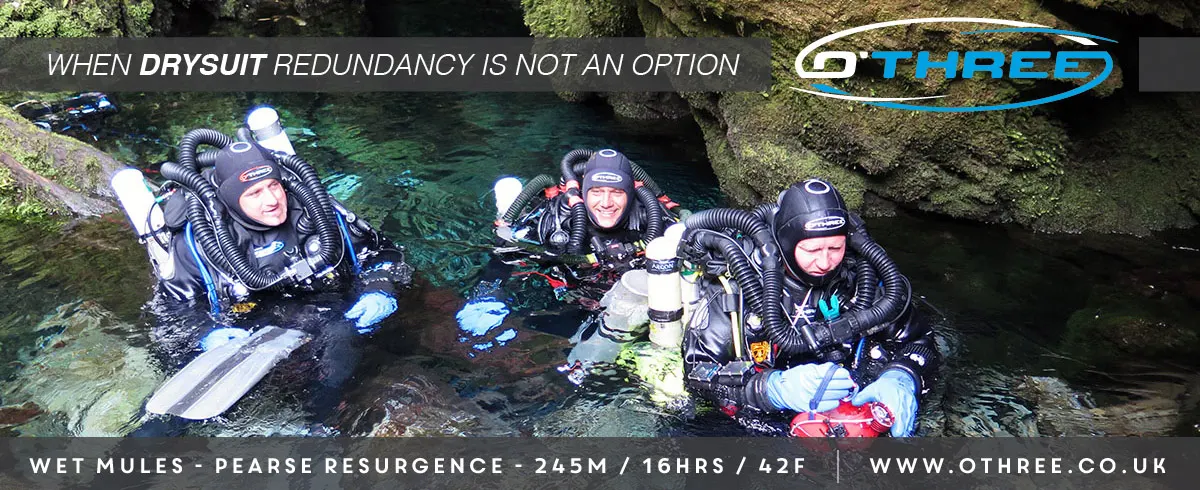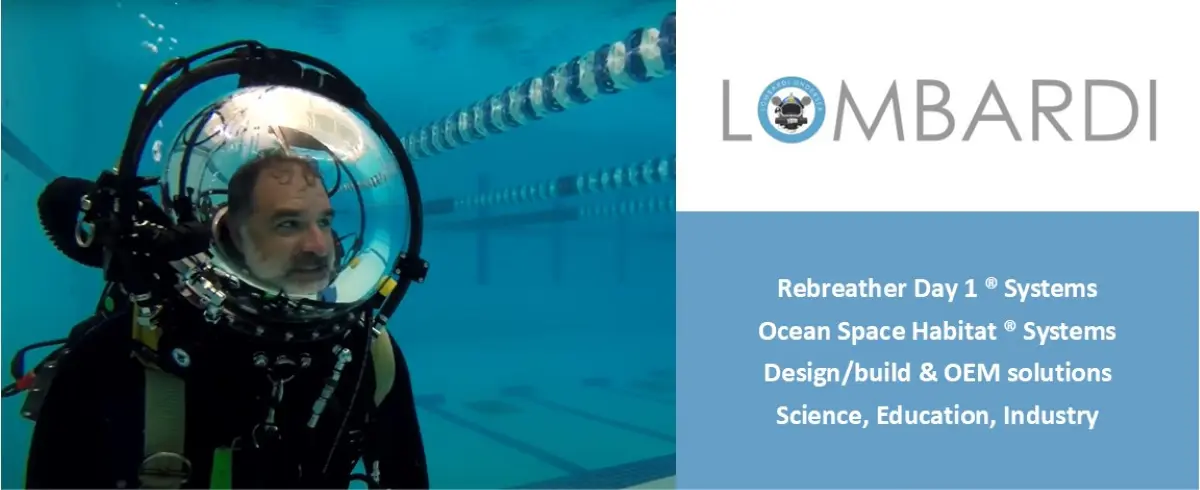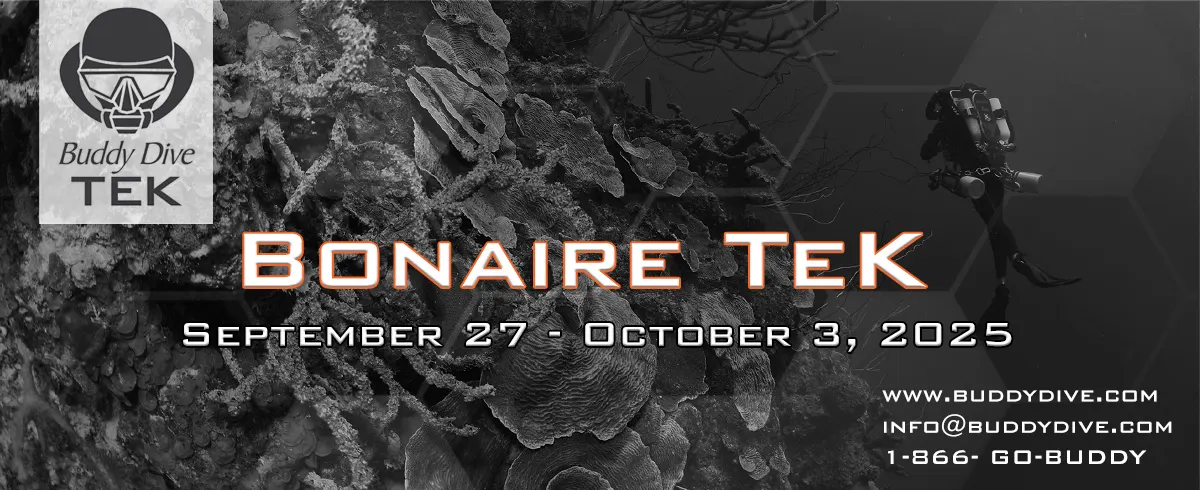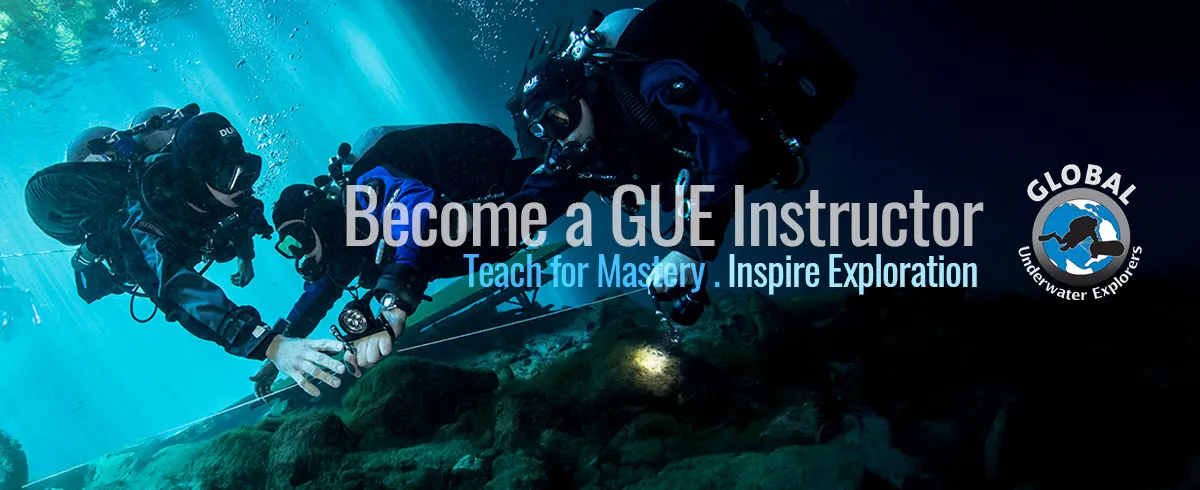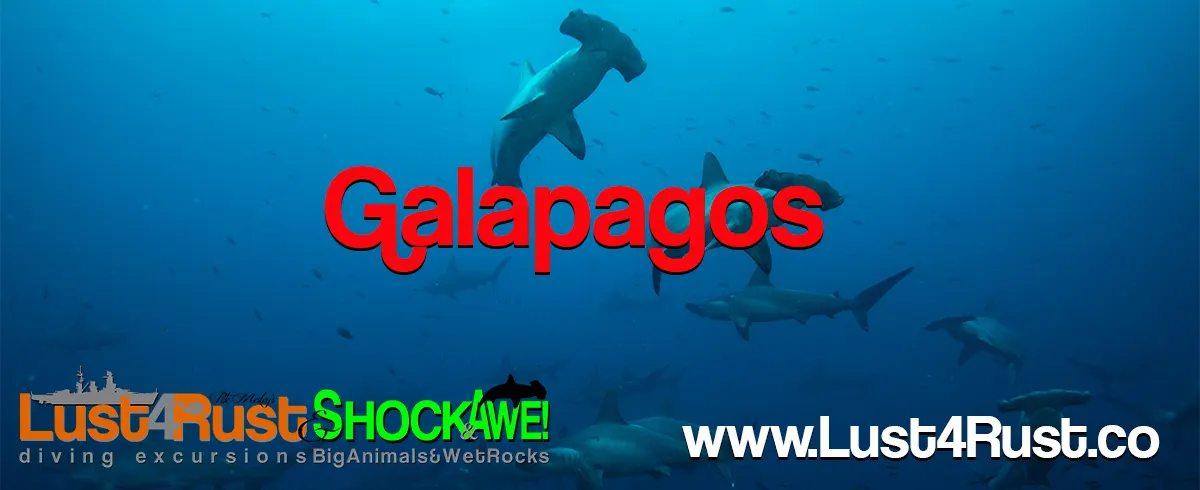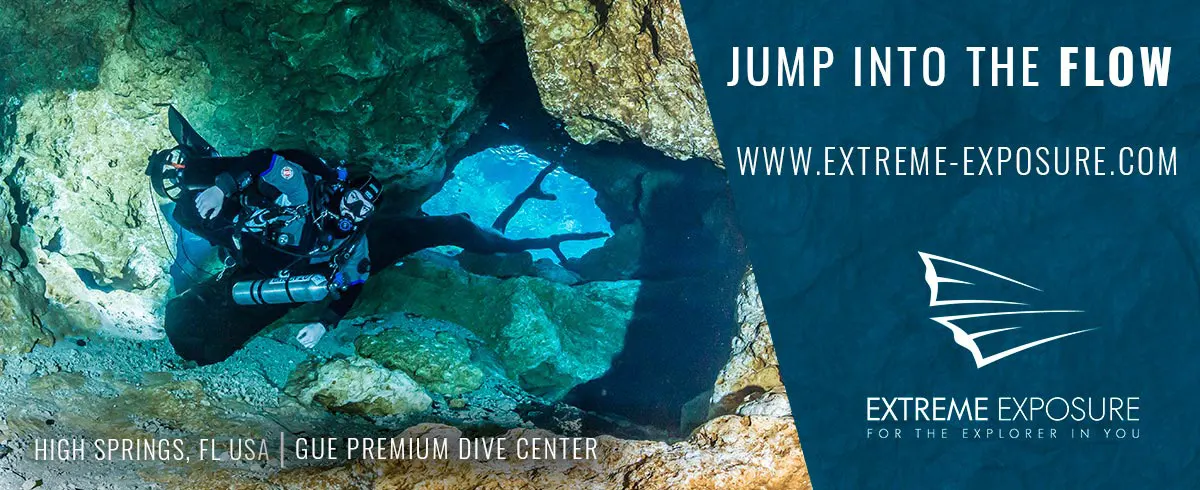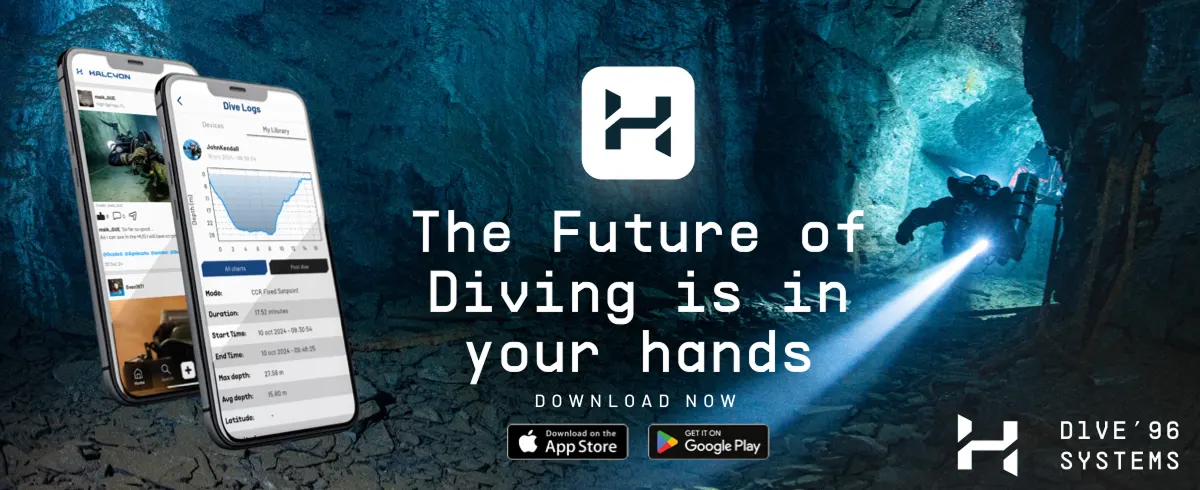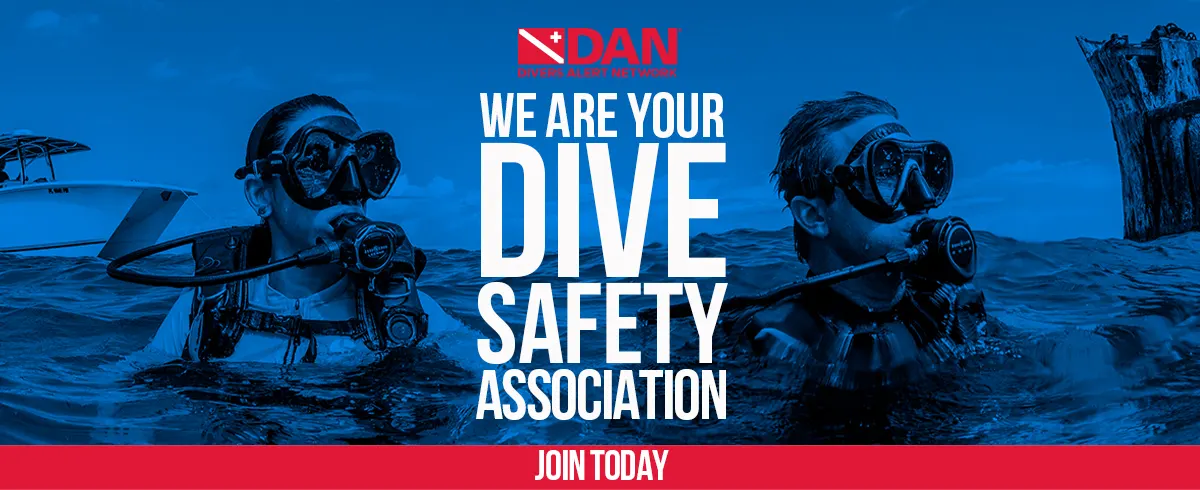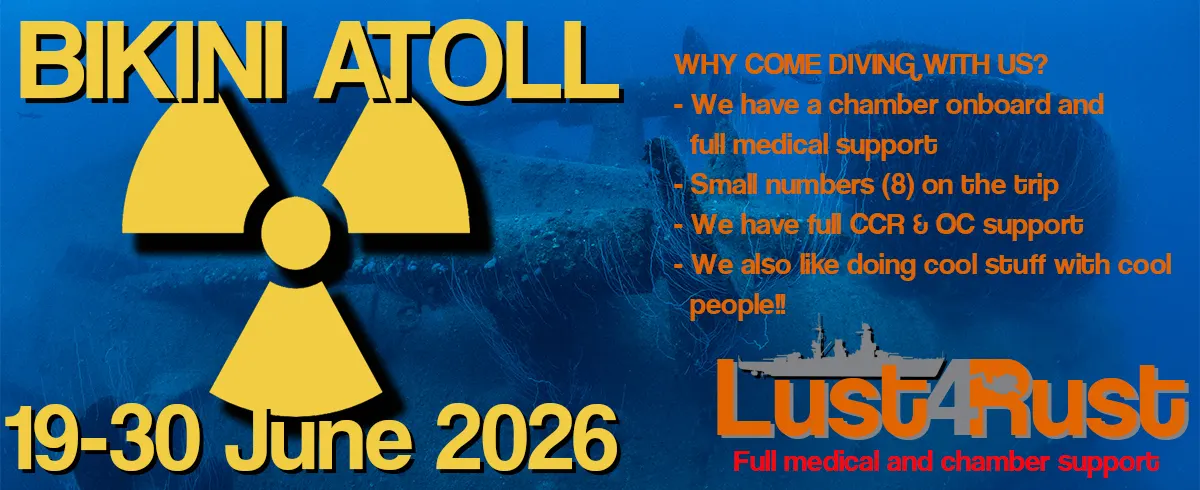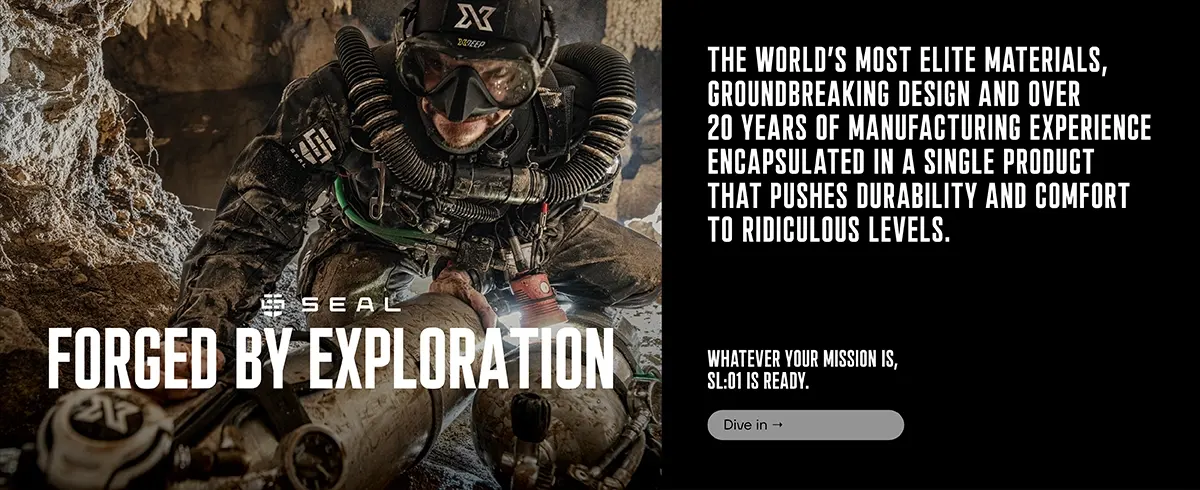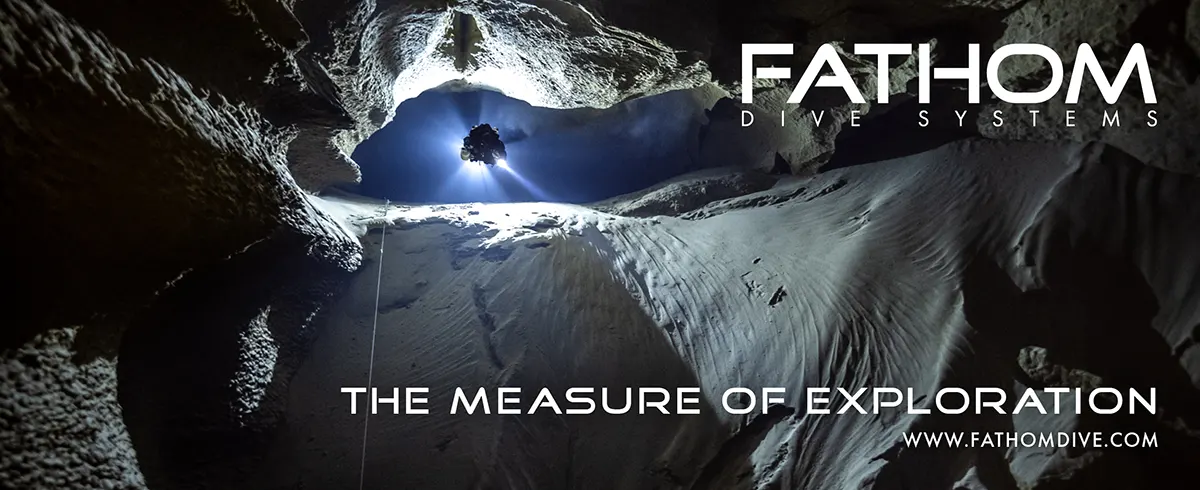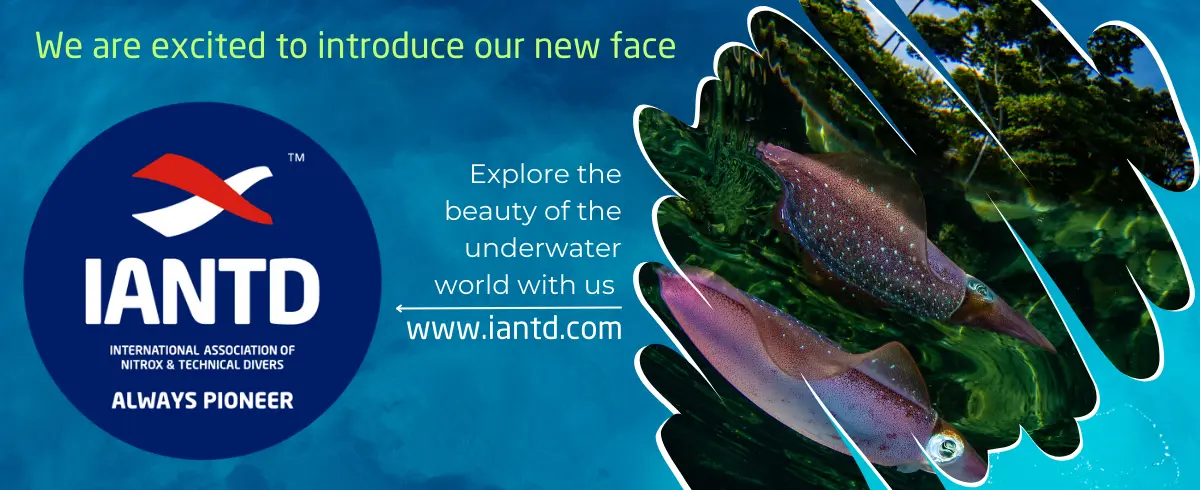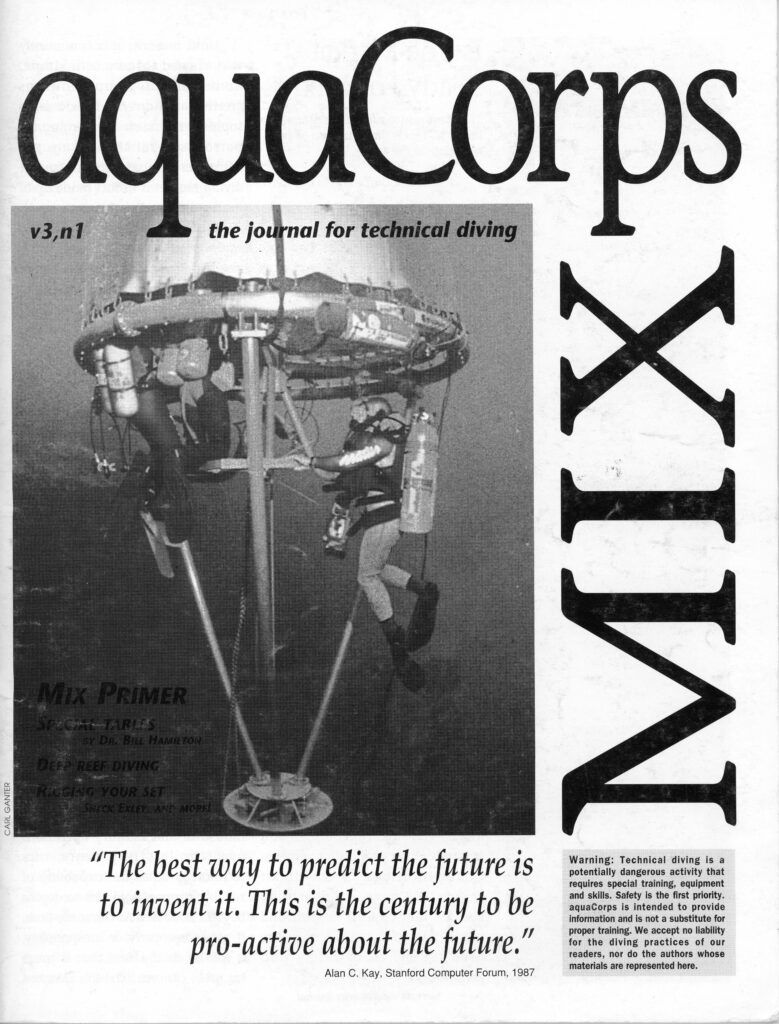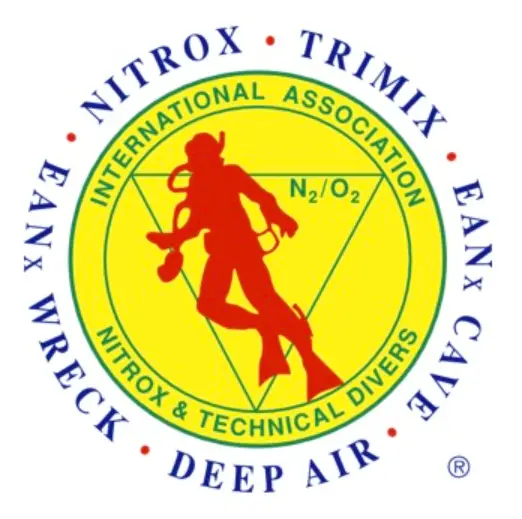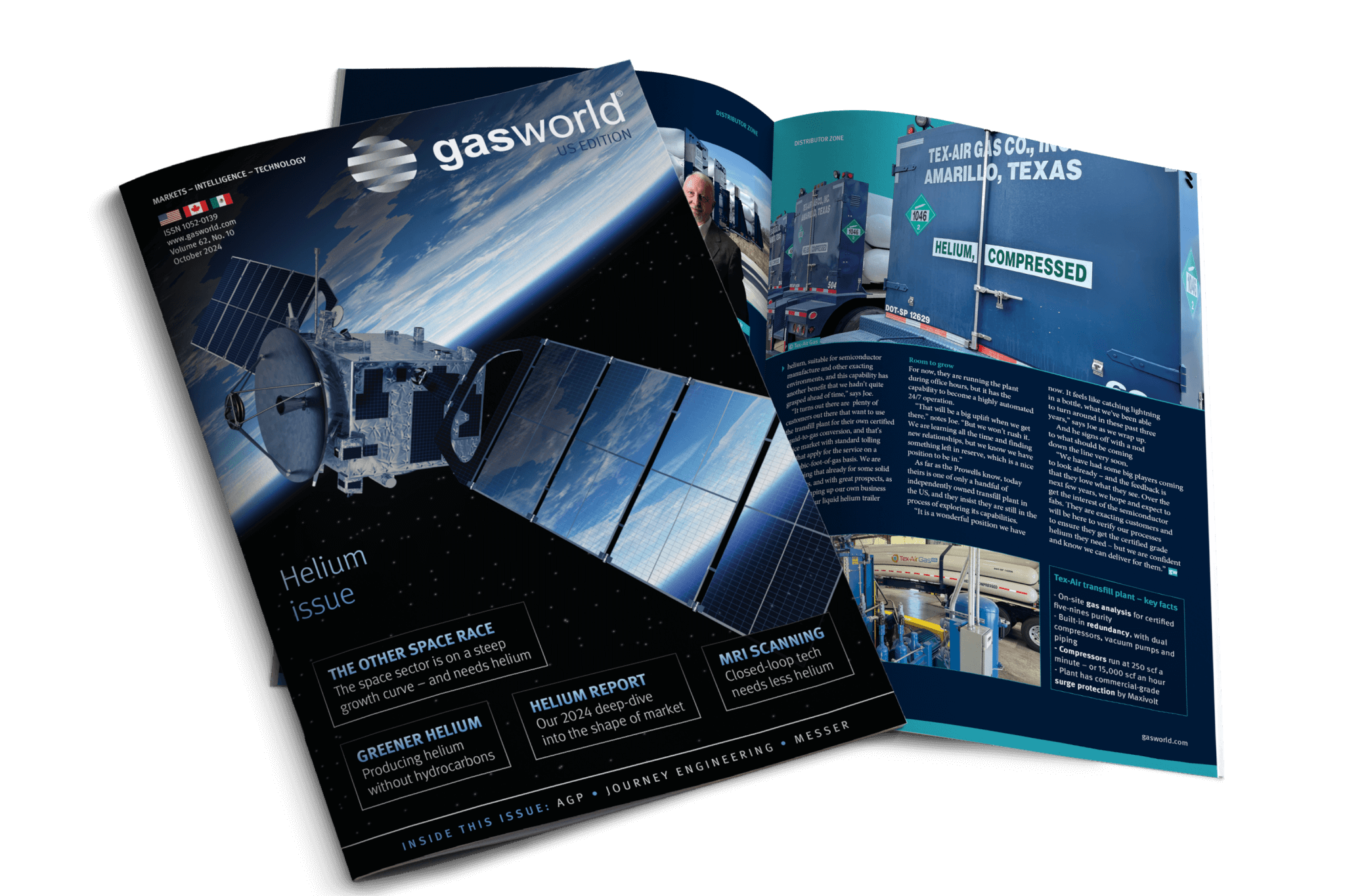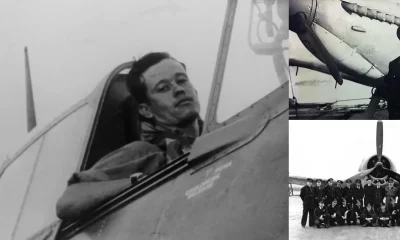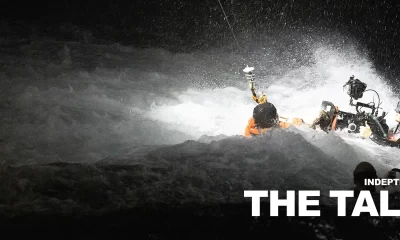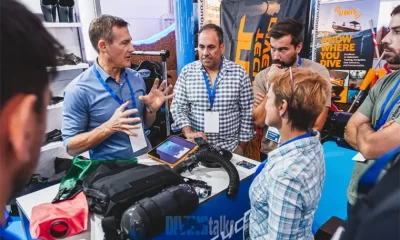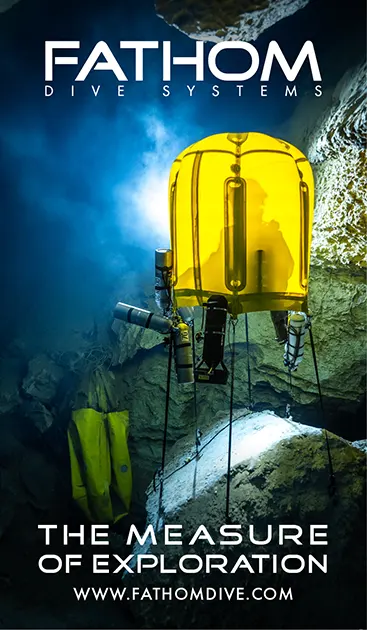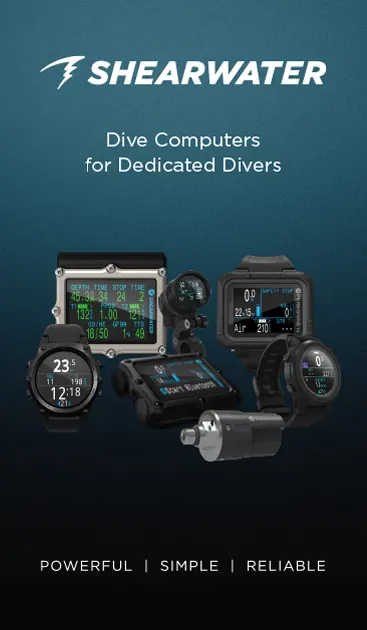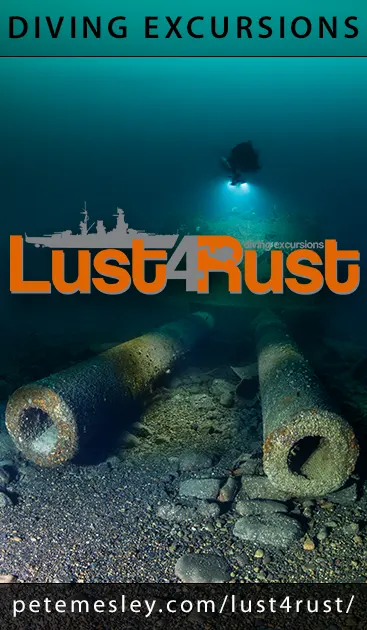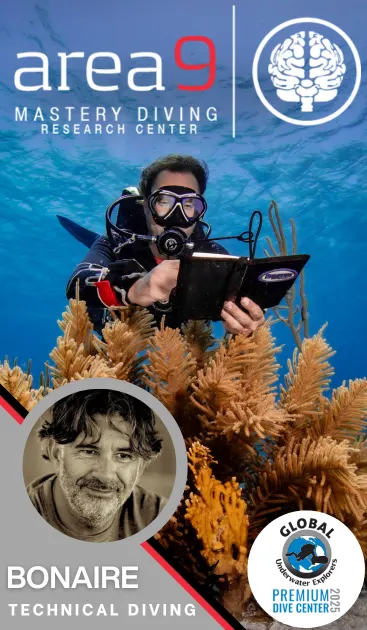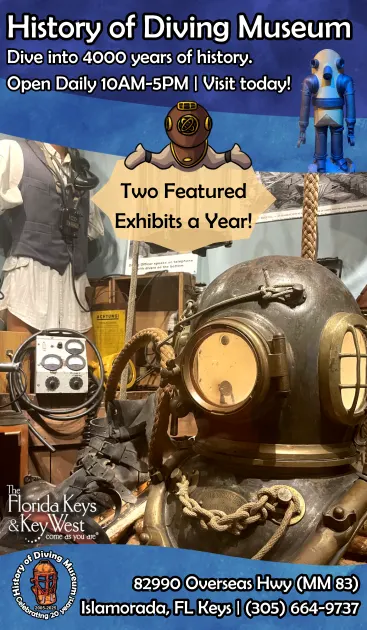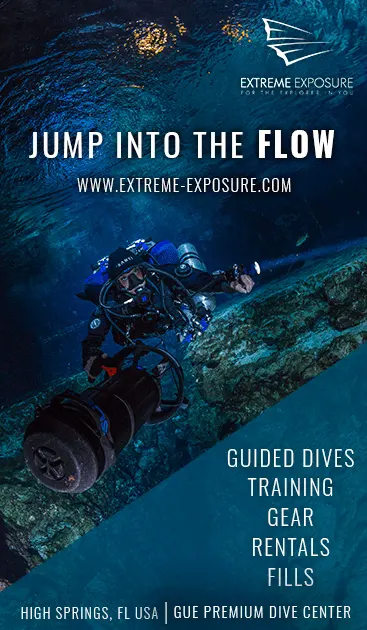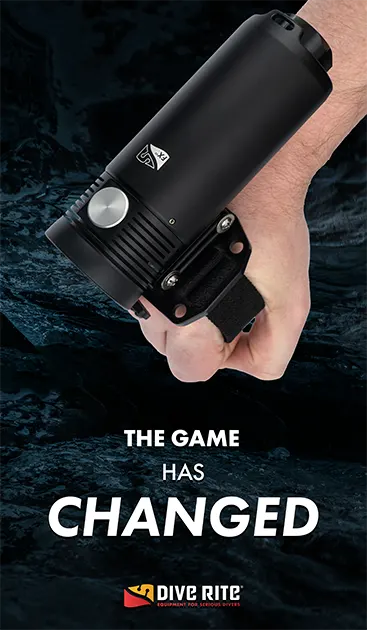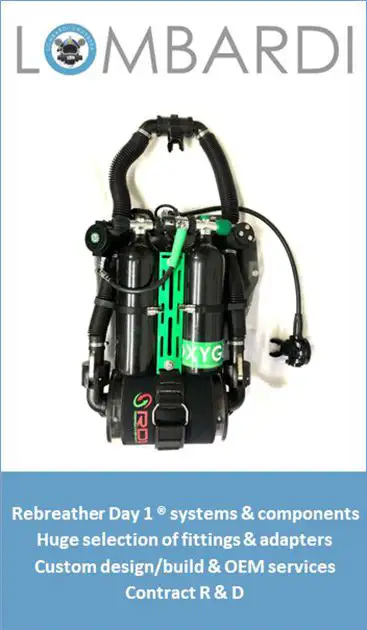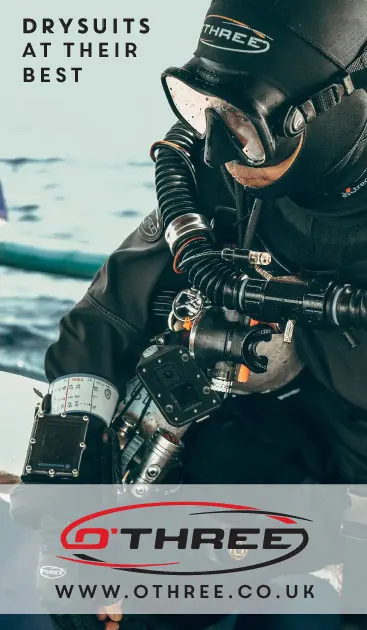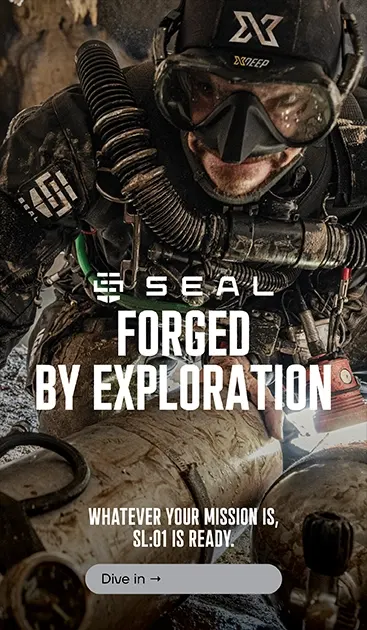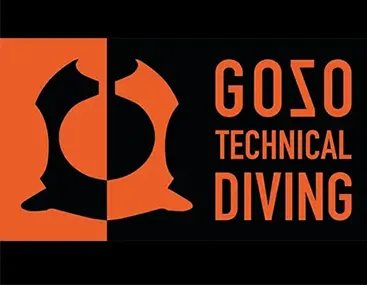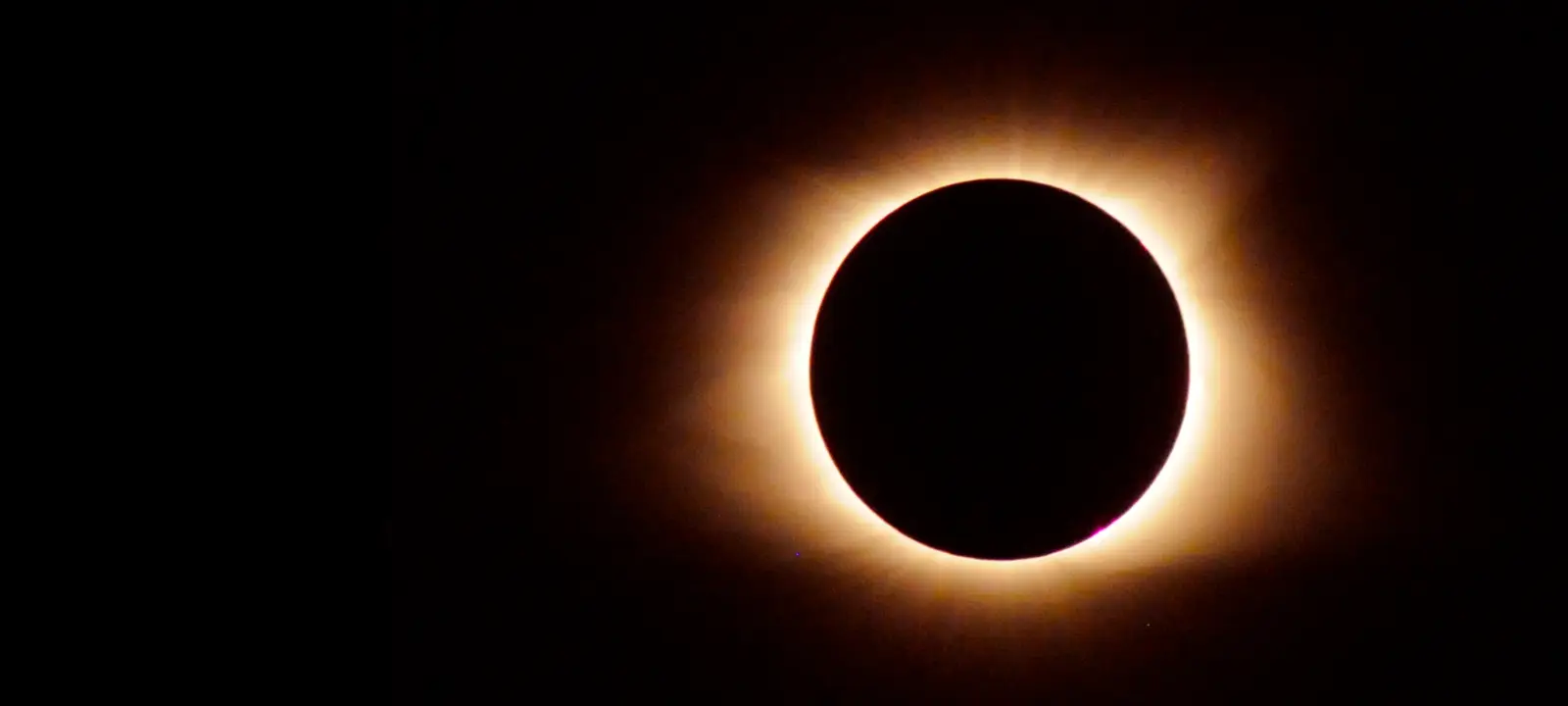
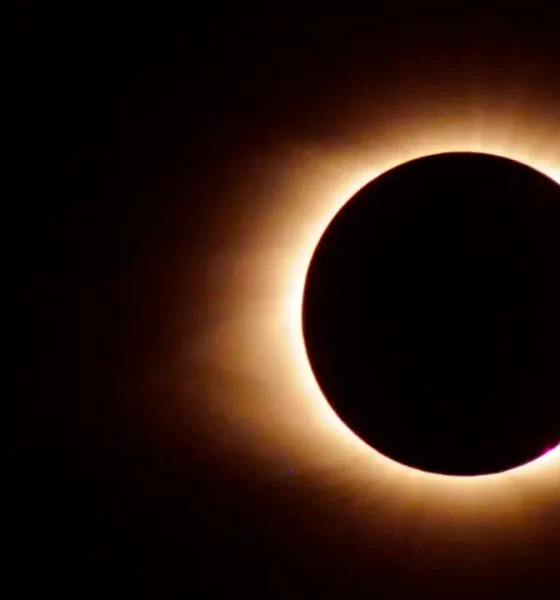
Latest Features
A Hundred Years of Helium
2024 marked the 100-year anniversary of humans breathing helium under pressure. Accordingly, tech diving instructor and scientist Jeff Bozanic teamed up with InDEPTH to highlight the significant events in the development of helium diving over the last century. Oubliez l’Enlèvement des profondeurs!
By Jeffrey Bozanic and InDEPTH. Special thanks to Kornbluth Helium Consulting. Photo credits as noted. Lead image: Solar eclipse. Photo by J. Bozanic.
As technical divers, we often rely on the use of helium in our breathing gas for deep dives, to reduce the effects of nitrogen narcosis. We just marked 2024 as the 100-year anniversary of divers using helium as a component in their breathing gas. To honor that occasion, I thought it would be fun to look at some landmarks in helium based diving on this anniversary. So let’s go back in time a little further, to see how this all began.
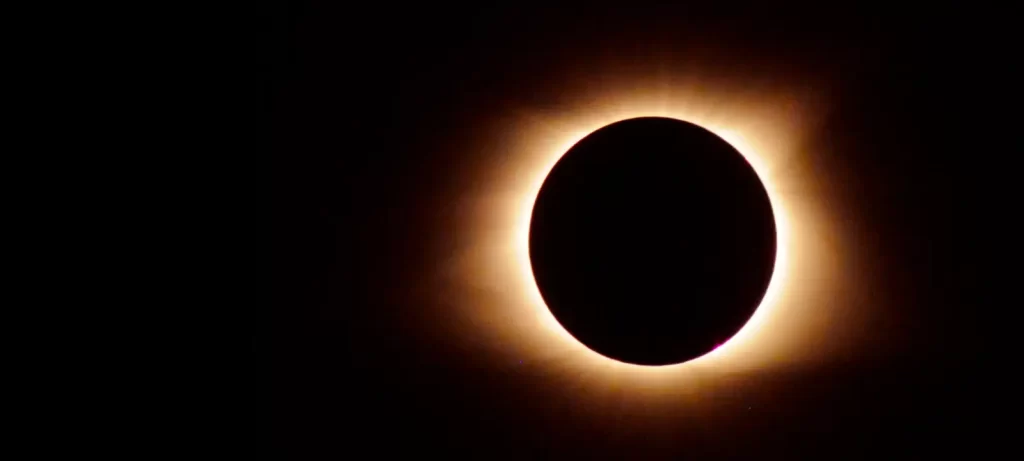
1868 (August 18): While observing a total solar eclipse in India using a spectrometer, French astronomer Jules Janssen noticed a yellow spectral line that did not conform to any known element.

1868 (October 20): Independently of Janssen, Norman Lockyer identified the same yellow spectral line while working at his private observatory in London. He named the element helium, after the Greek word “helios,” meaning sun. Interestingly, Lockyer went on to become a co-founder of the journal Nature, still one of the most prestigious scientific journals today.
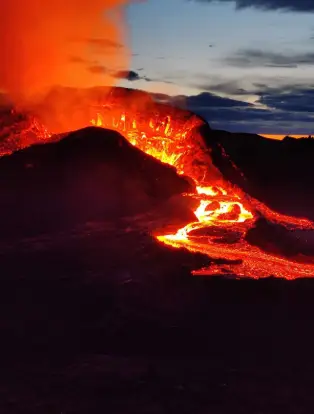
1882: Italian physicist Luigi Palmieri first detected helium on Earth when he analyzed the lava from Mount Vesuvius.
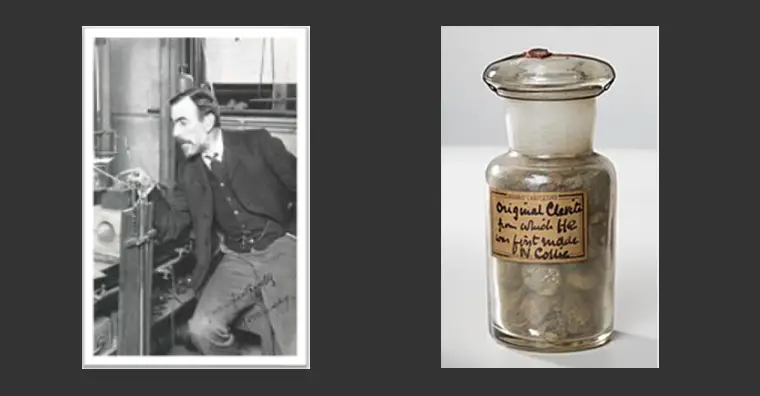
1895 (March 26): Scottish chemist Sir William Ramsey isolated helium by treating the mineral cleveite (a variety of uraninite) with sulfuric acid and separated out O2 and N2.
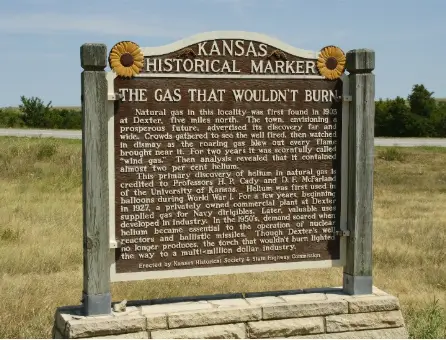
1903 (May): Helium was discovered in a natural gas well in Dexter, Kansas, It was also observed that the gas did not burn. Later it was determined that most of the gas was inflammable, including helium, which made up 1.84% of the gas being expelled.
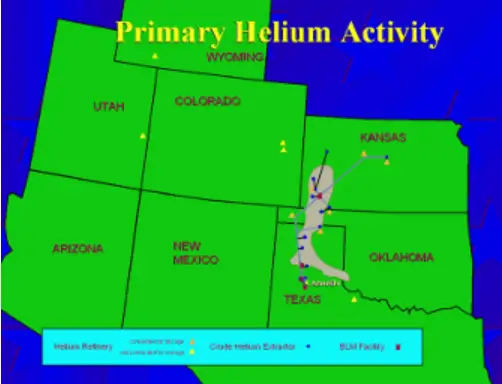
1907: Geologists Hamilton P. Cady and David F. McFarland analyzed surrounding wells in Kansas, Texas, and Oklahoma and found that they all contained helium, previously thought to be rare on Earth but abundant in the sun, it was available in plentiful quantities from the Great Plains of the United States. “Helium is no longer a rare element, but a common element, existing in abundance for uses that are yet to be found for it.” Those were the only helium reserves known to exist at the time! Small quantities sold at: $90/l or $2500/cf.
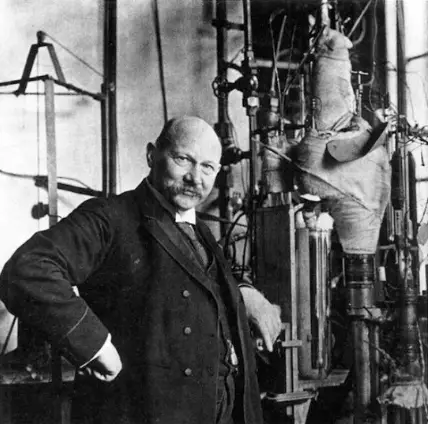
1908: Dutch physicist Heike Kammerlingh liquefied helium for the first time by chilling it to −268.93 °C/−452.07°F
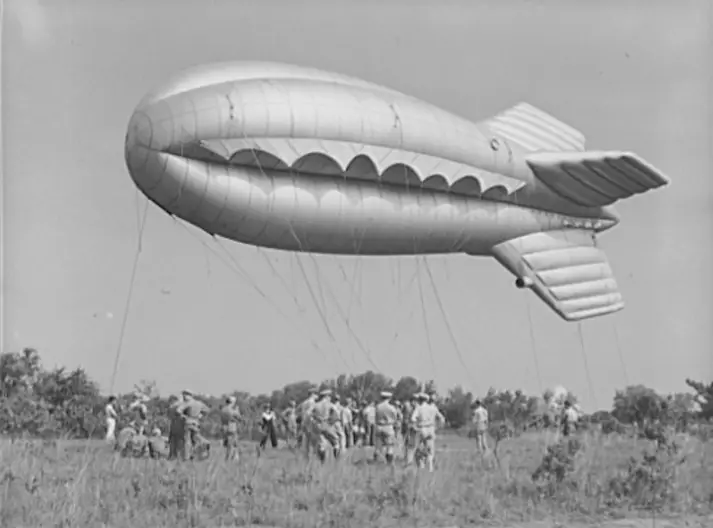
1915: The first helium production plant was established in Petrolia, Texas. The goal was to supply “barrage balloons” fror the military with non-flammable, lighter-than-air gas replacing the extremely flammable hydrogen. Cost remained at about $2,500 per cubic foot, over $60,000 per cubic foot in today’s dollars. I don’t want to hear any more complaining about how expensive helium is now!
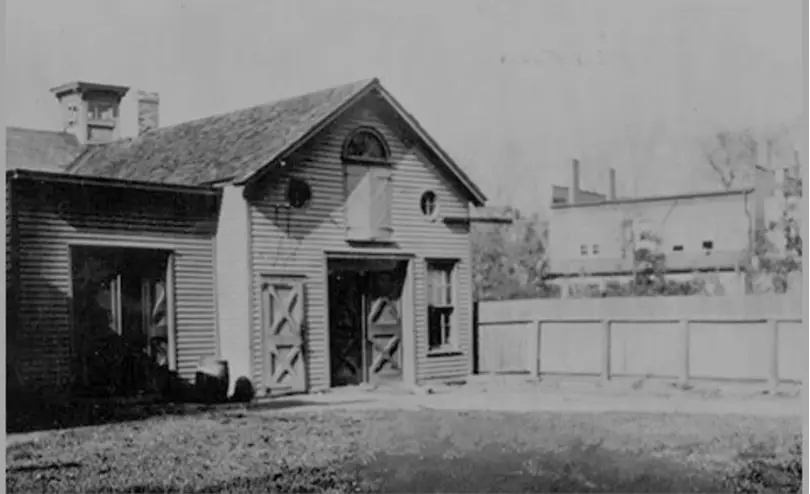
1919: C.J. Cooke and Dr. Elihu Thompson of General Electric Research Labs, speculated that using helium for diving might reduce the effects of inert gas narcosis. Dr. Thompson was a co-founder of General Electric.
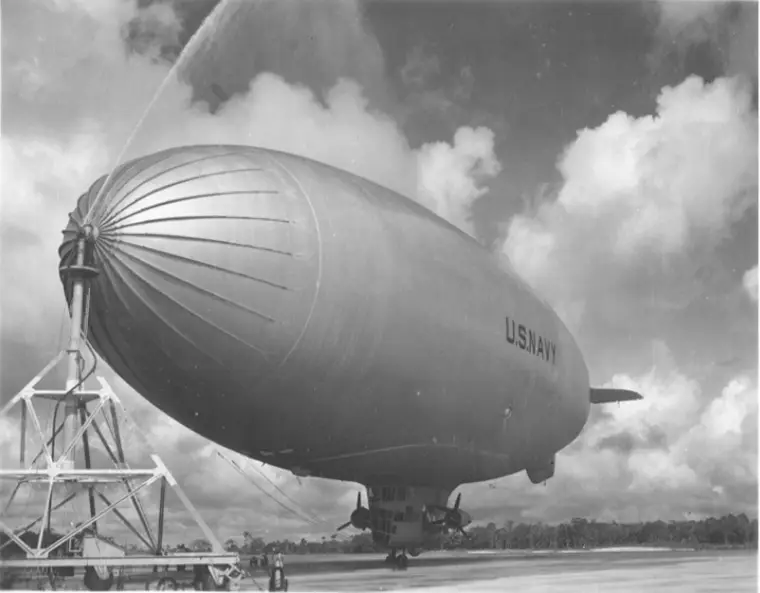
1921 (December 1): Inaugural Flight of the first helium airship, the U.S. Navy C-7 from Norfolk, VA to Wash. D.C. (300 km/186 miles)
1924: The U.S. Navy conducted the first test using a helium-oxygen (heliox) mixture in manned dives in a hyperbaric chamber. They found that helium was non-narcotic, providing a solution for the problems they were experiencing with deep diving. The cost of helium by then was only about $100 per cubic foot ($3.53/l), or about $1,900 per cubic foot in today’s dollars. Just think of the savings just 10 years brought!
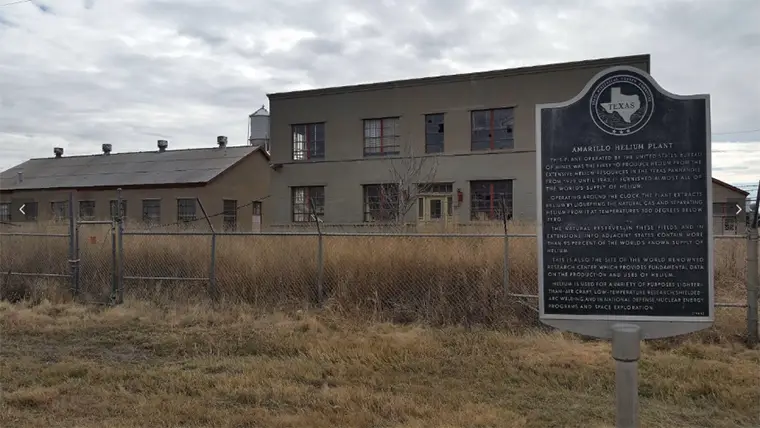
1925: U.S. Government established the “Federal Helium Reserve” in Amarillo, Texas to supply strategic gas for military airships. Gas was stored in a natural geologic formation, called the Bush Dome Reservoir. Helium costs dropped.
1925:Drs. Joel Hildebrand (University of California), R.R. Sayers and W.P. Yant, Bureau of Mines conducted successful heliox decompression on small animals.
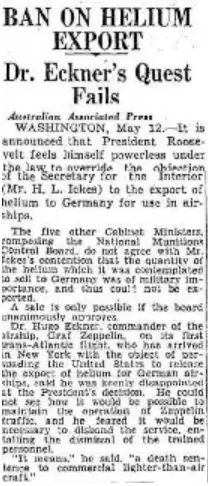
1927: The Helium Control Act of 1927 established the U.S. Government as the custodian of helium reserves in the United States and forbade the export of helium to any foreign nation.
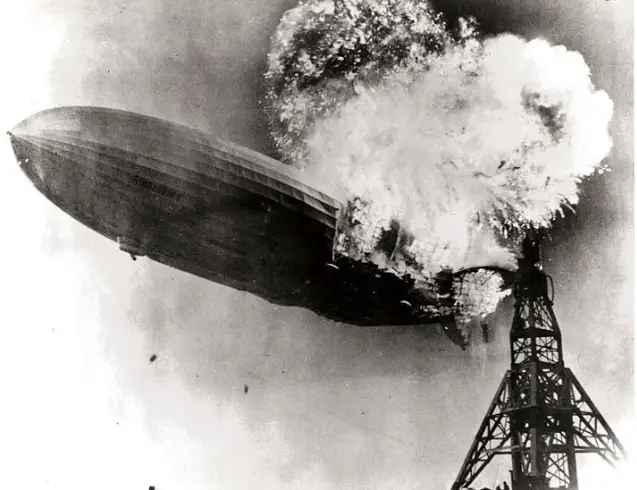
1937 (May 6): The German LZ 129 Hindenburg, exploded killing 36 passengers. The Germans had been forced to use hydrogen, which is explosive, instead of helium for their newly designed LZ 129 Hindenburg, as helium was not available.
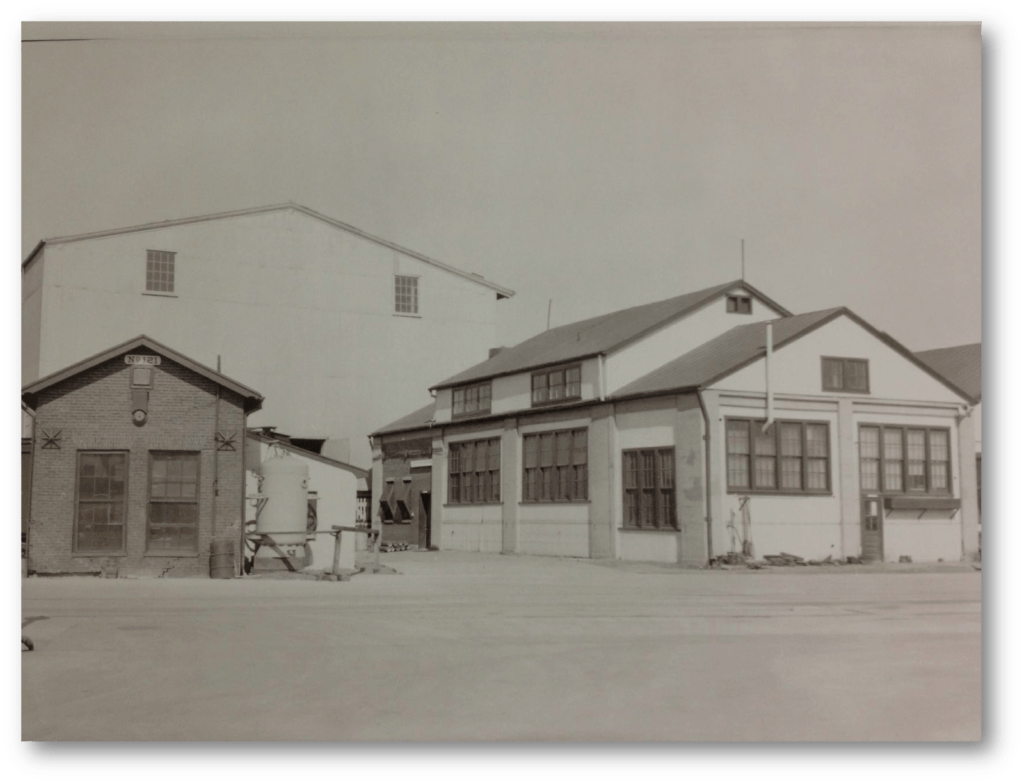
1937: The first manned test dives using a helium-oxygen mixture were conducted in open water and hyperbaric chambers by the U.S. Navy Experimental Diving Unit (NEDU). Tests were conducted up to a maximum depth of 152 m/500 ft in the chamber. The diver was not told how deep he was compressed. When asked to estimate his depth, he said, “about 100 feet.”
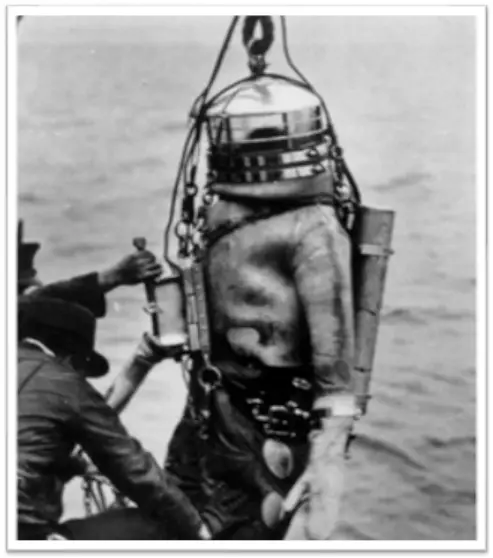
1937 (December 1): Engineer and commercial diver Max Eugene Nohl set a world record for an open water dive to 128 m/420 ft in Lake Michigan, near Milwaukee, Wisconsin. He used a custom designed helmet and dive dress in conjunction with a closed circuit rebreather, all of which he designed and later patented. Cost of helium at that time was about $3 per cubic foot ($0.11/l), or about $65-70/cf in today’s dollars.
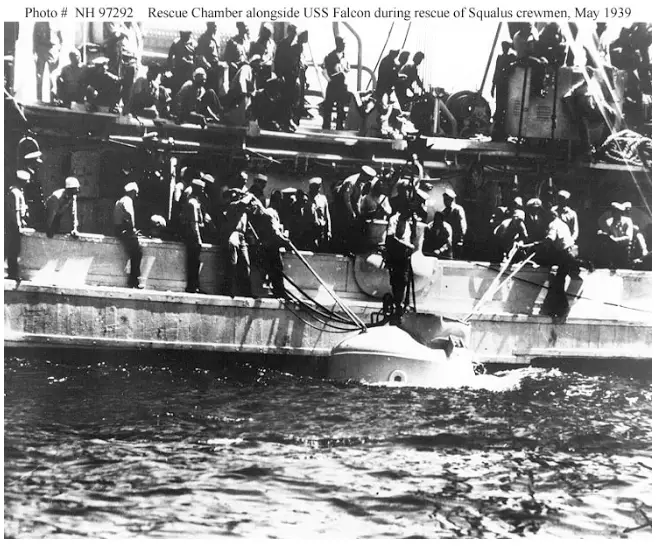
1939 (May 23): Thirty-three crew members were rescued from the USS Squalus submarine, which sank in 74 m/243 ft of seawater, using the McCann Submarine Rescue Chamber. About 20 divers led by Commander Charles “Swede” Momsen used heliox in the first operational use of helium as a breathing gas to accomplish an actual open water task. They conducted 248 deep dives with two incidents of DCS. Twenty-six crew members died when a mechanical failure caused the aft torpedo room to flood, sinking the submarine.
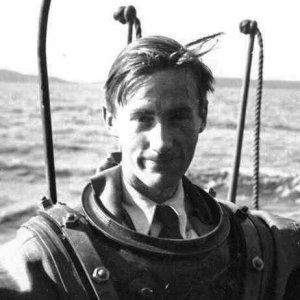
1943-1945: Working under the Swedish National Defense Research Institute, 26-year old inventor Arne Zetterström (1917-1945), was the first to experiment with hydrogen breathing mixtures for use in deep diving. At the time, the United States was the sole source of helium and had imposed strict export restrictions. He conducted six “hydrox,” (a hydrogen-oxygen mix) bounce dives to depths between 40m-160m. Sadly, Zetterström was tragically killed on his final hydrox dive to 160m, when support personnel mistakenly pulled him up from depth. He died of decompression illness.
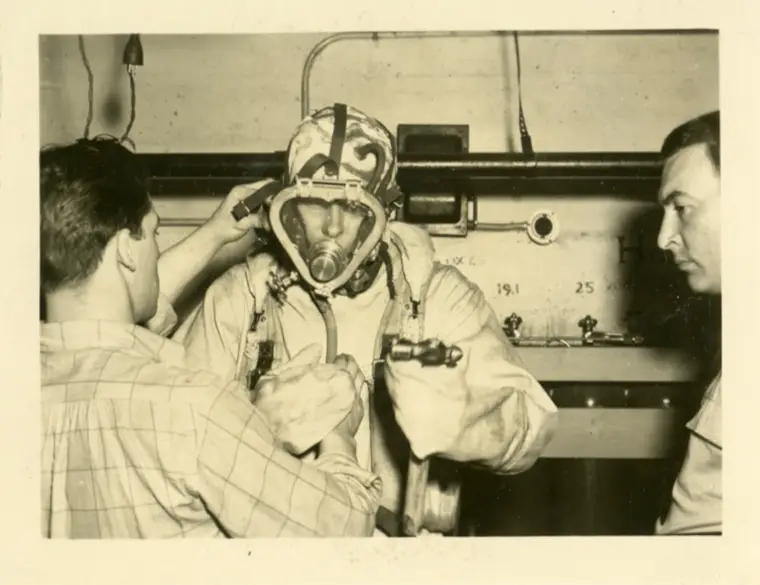
1945 (April 27): Jack Browne, friend and former business partner of Max Nohl, surpassed Nohl’s record deep dive, achieving a depth of 168 m/550 ft in a wet tank (a hyperbaric chamber mostly filled with water) using heliox and a lightweight helmet that he designed for DESCO, the commercial diving equipment company that he and Nohl founded.
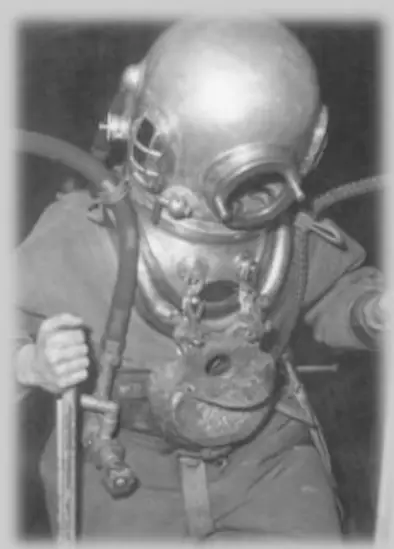
1948 (August 28): Diver First Class Wilfred Bollard of the Royal Navy set a deep diving record by descending to 165 m/540 ft from the diving vessel HMS Reclaim in Loch Fyne, Scotland using helium provided by the US. This was about 1 m/3.3 ft deeper in pressure than Browne’s dive, but was conducted in open water.
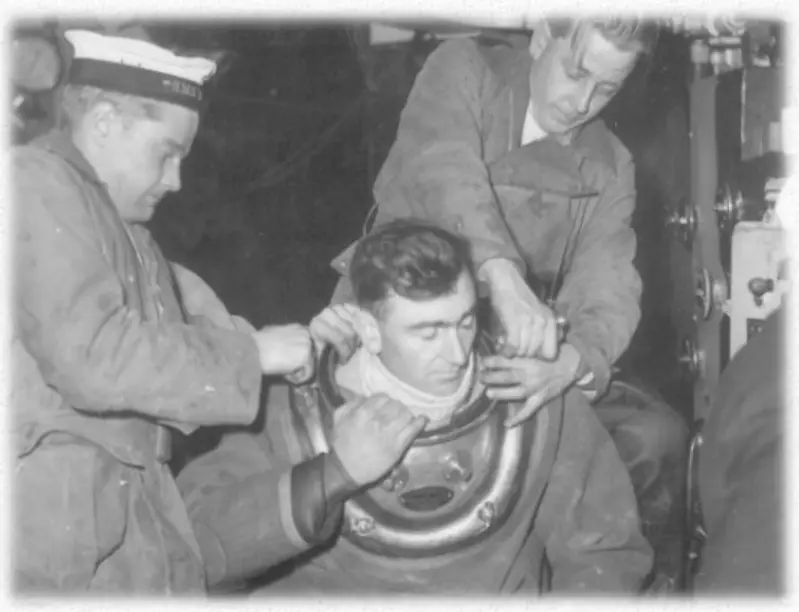
1956 (October 12): Diving from the same HMS Reclaim in Sørfjord, near Narvik, Norway (within the Arctic Circle), Lieutenant George Wookey of the Royal Navy surpassed Bollard’s record, diving to 183 m/600 ft.
1960: Helium Act Amendments Of 1960: The amendments authorized the U.S. Bureau of Mines to permit four companies to recover helium from the Reserve, build A 425-mile Pipeline From Kansas to Clifford Gas Field, Amarillo, Texas, and to borrow funds to purchase helium from the companies (Due in 1985).
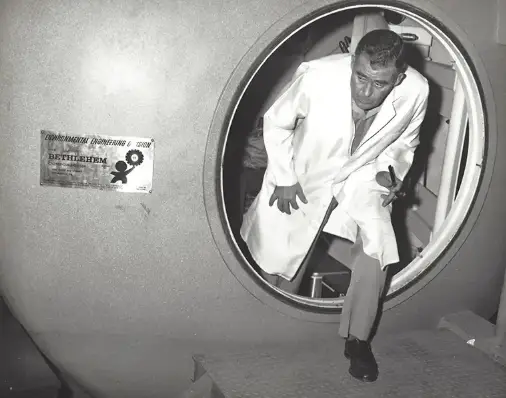
1962 (August): Dr. George Bond conducted the first simulated saturation dive to 61m/200 ft in a hyperbaric chamber at the U.S. Navy Experimental Diving Unit (NEDU) facilities in Panama City, Florida. Project Genesis, as it was known, led directly to SEALAB.
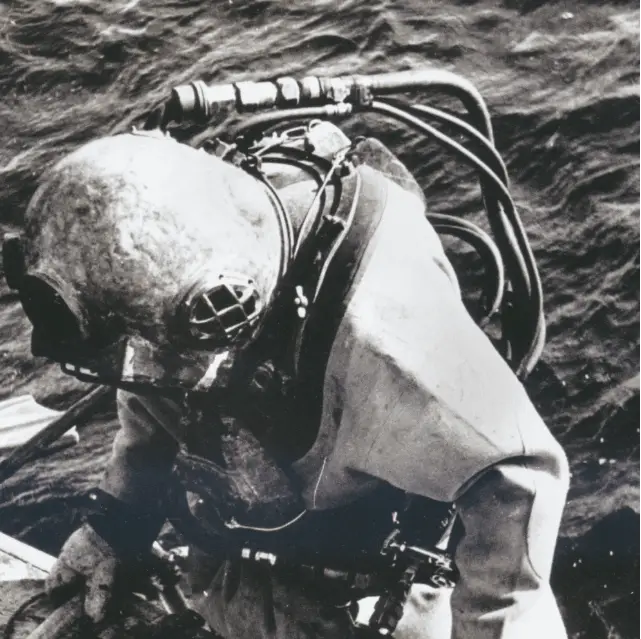
1962 (November 3): Abalone diver Danny Wilson conducted a 122 m/400 ft heliox dive near Santa Barbara, California, using a new “lightweight” helmet and umbilical system. It was the first “commercial” helium dive. The goal was to Demonstrate that 60-min dives to 100m/328 f were feasible. Wilson, Lad Handelman, Kevin Lengyel and others formed General Offshore Divers, and were able to beat out Associated Divers, which used air breathing mix, for oilfield work.
1962: Alan Krasberg, founder General Diving Systems, Scotland, built the first mixed gas closed circuit rebreather.
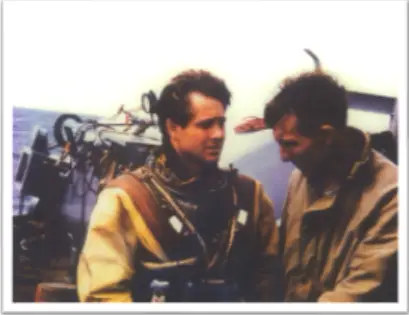
1963: General Offshore Divers conducted 300 “helium” dives using special tables they had developed, and also experimented with trimix (oxygen, helium, nitrogen mixes).
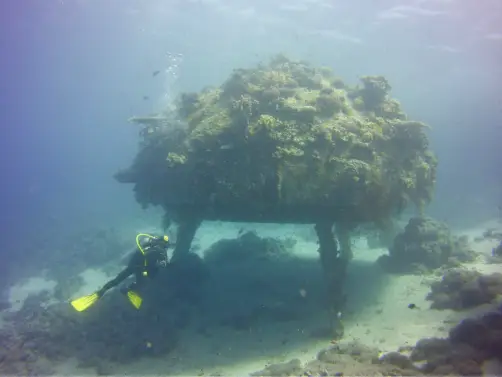
1963: Jacques Cousteau used heliox breathing mixtures for their excursions from the 90 fsw (27 msw) deep habitat as part of his Conshelf II program in the Red Sea near Sha’ab Rumi reef in Sudan.
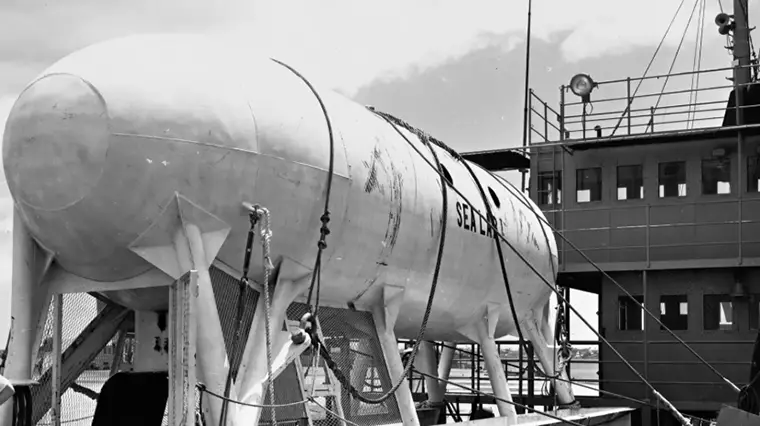
1964 (July 20-August 31): Four divers saturated in SEALAB 1 for 11 days off Bermuda at a depth of 59m/192 ft. This was the first open-water helium saturation dive.
1965: The Federal Helium Reserve contained close to a billion cubic meters of helium, and the US was $1.4B in debt. At the time, the US produced 90% of the world’s helium supply, the balance made up by Canada, Poland, and Russia.
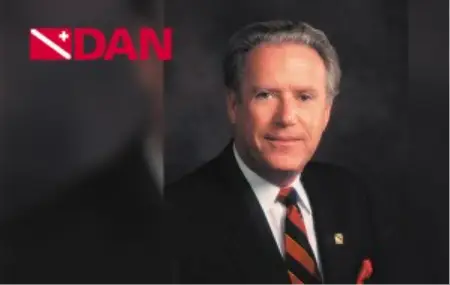
1965: “Helium Tremors” first described by Royal Navy physiologist Peter B. Bennett (Co-founder Divers Alert Network).
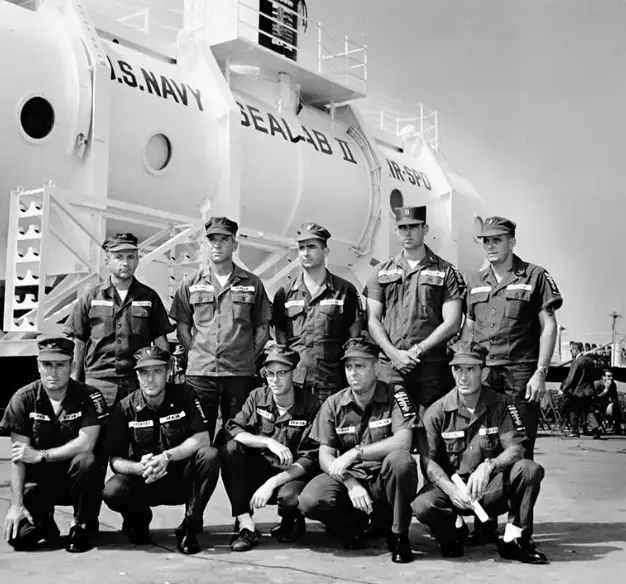
1965 (August 28-October 14): SEALAB ll was conducted off La Jolla, California. Twenty-eight divers participated in three separate 15-day missions, with 10 living in the habitat on each mission. The depth was 63m/205 ft. Mercury astronaut Scott Carpenter was one of the divers, becoming the world’s first “astronaut-aquanaut.”
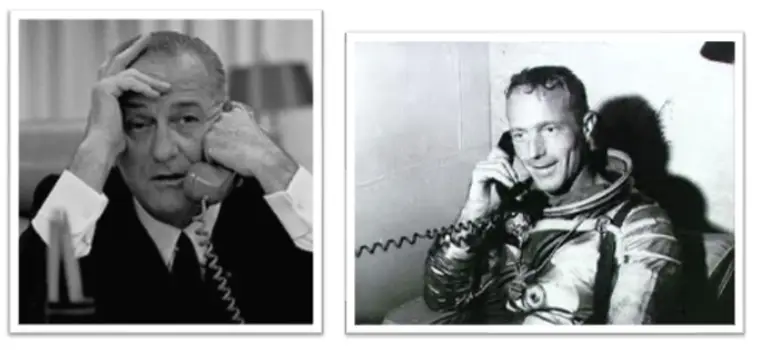
1965 (September 26): Scott Carpenter took a congratulatory call from President Lyndon Johnson while decompressing in Sealab ll’s decompression chamber. The telephone operator found Scott Carpenter’s chipmunk-like voice so unnerving she almost refused to patch through the call. It wasn’t until Sealab II’s lead investigator, Dr. George Bond, joined the call to explain the situation (with unaffected speech) that the operator connected Carpenter to President Johnson.
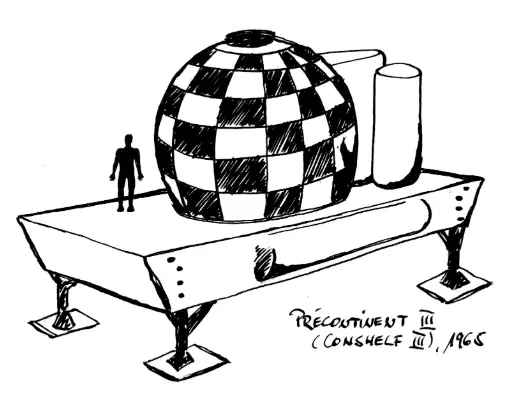
1965 (September 17-October 17): Six aquanauts lived in Cousteau’s Conshelf III habitat for three weeks. The habitat was located in the Mediterranean Sea, near the coast of France at a depth of 328 fsw (100 msw).
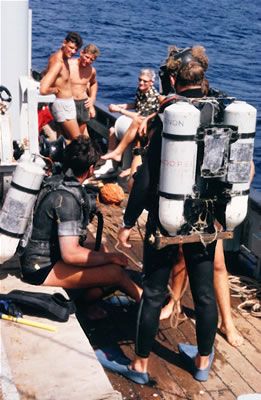
1965: The Cambridge University Underwater Exploration Group (CUUEG), AKA Cambridge University Scuba Diving Club undertook a series of diving projects. One project undertaken in Malta in 1965 investigated the effects on IQ, intelligence and dexterity of working divers using nitrox and heliox mixtures. Experiments tested such things as mental arithmetic at the surface, in a chamber at surface, in a chamber at pressure, and underwater at 10m, 20m, 60m on all the various gas mixes.
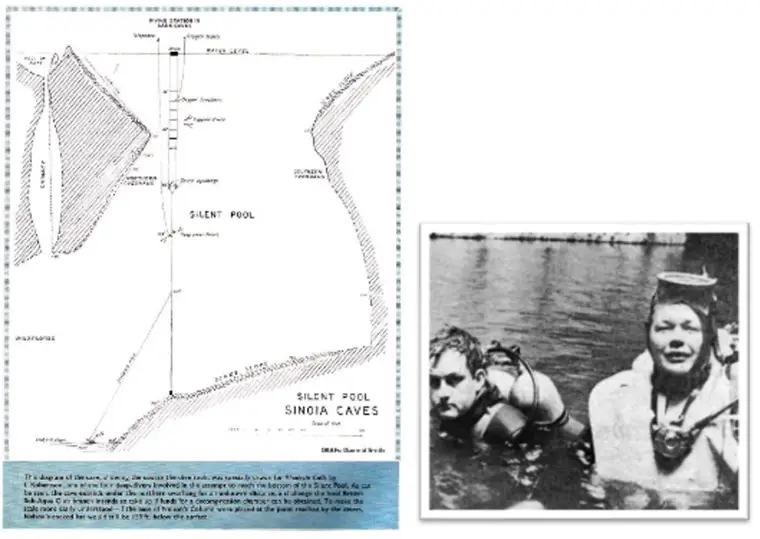
1968 (December 29): First “Tech” Trimix Dive. British Sub Aqua Club (*BSAC) divers Ian Robertson, Roly Nyman, and John and Danny van der Walt use trimix 16/36 ( 16% oxygen, 36% helium, 48% nitrogen) to a depth of 86m/279 f) in Silent Pool in Sinoia (Chinhoyi Caves), Rhodesia (now Zimbabwe).
1968: R.W. Braun coined the term High Pressure Nervous Syndrome (HPNS) to describe symptoms of “helium tremors.”
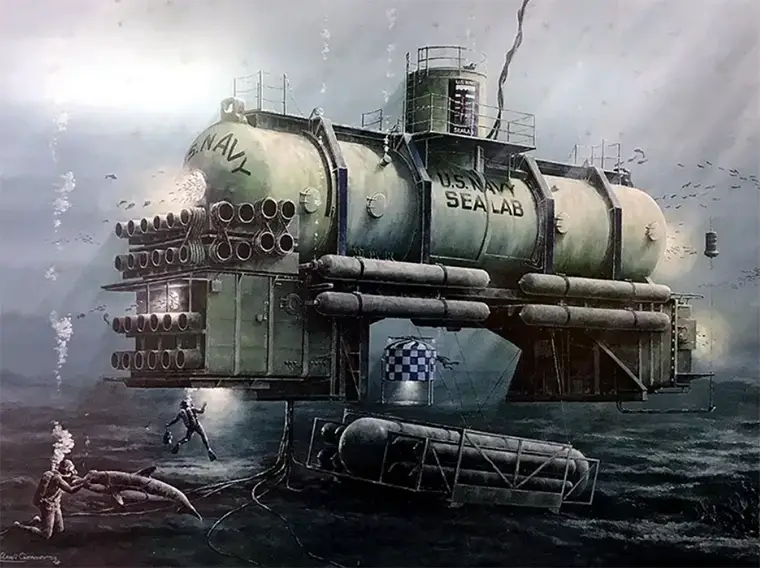
1969 (February): SEALAB III took place off San Clemente Island in southern California at a depth of 610 fsw (186 msw). The program was terminated prematurely following the death of aquanaut Berry L. Cannon. It was believed he died as a result of problems with his rebreather. Ocean engineer turned sleuth Kevin Hardy recently determined that Cannon was likely electrocuted.
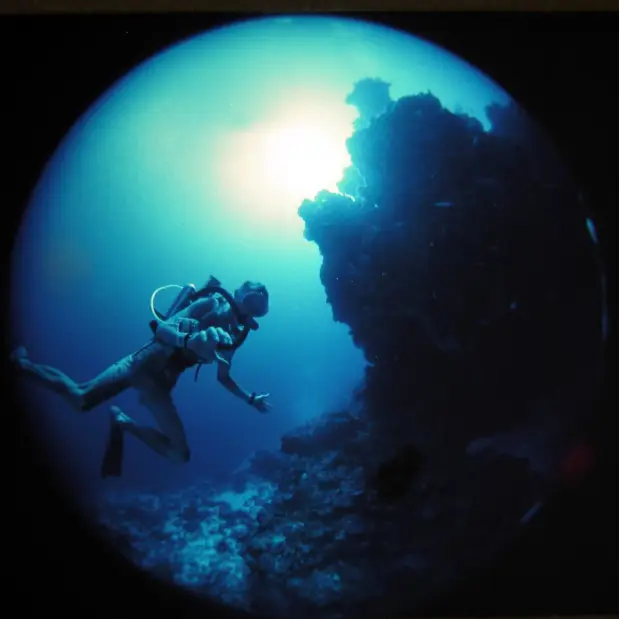
1968: Marine biologist Walter Starck designed the first commercial closed circuit mixed gas rebreather, dubbed Electrolung, intended for sport divers and conducted dives to 93m/300 ft using a variety of trimix diluents, for example Tx10/50.
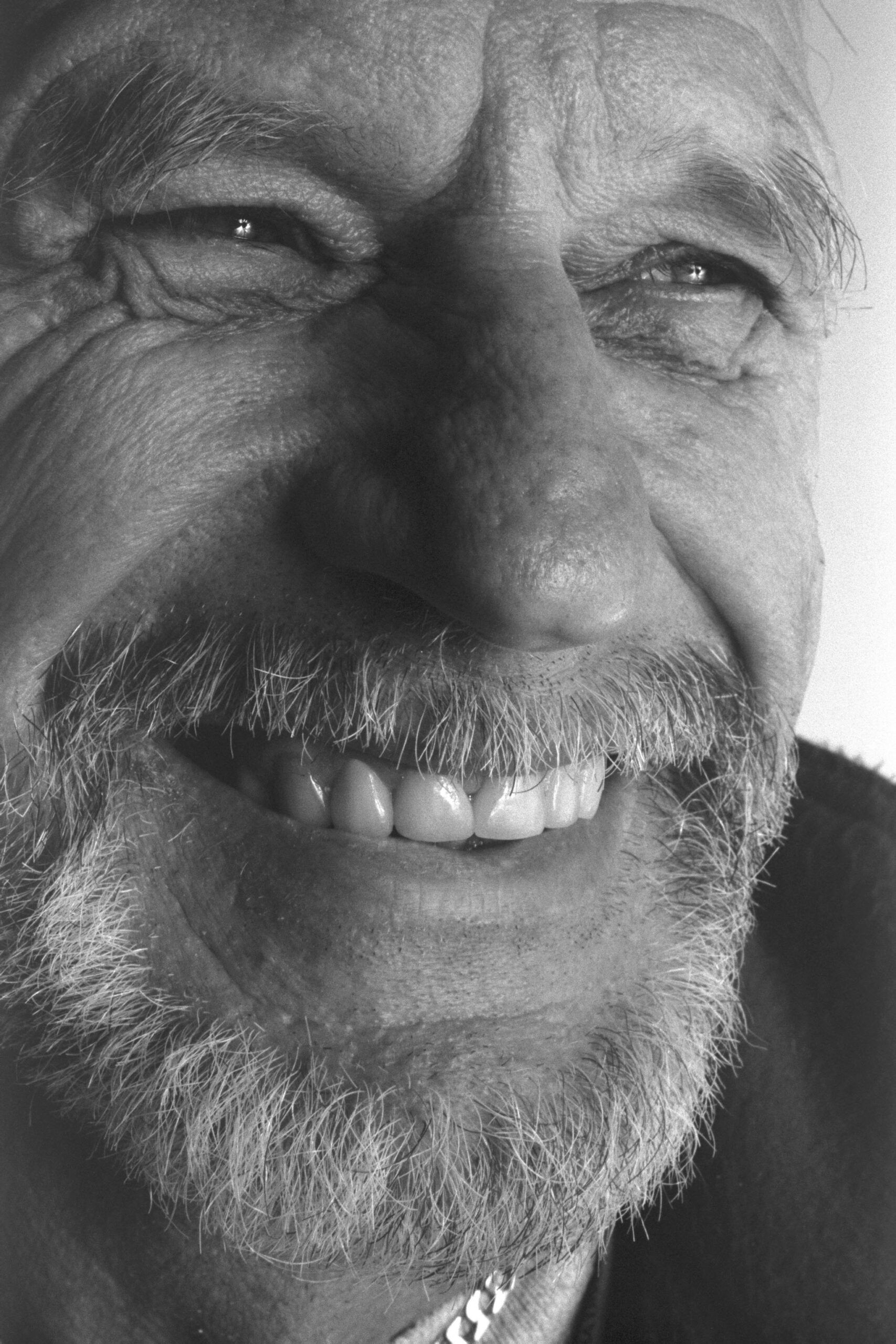
1969-1976: During his tenure as Diving Officer at the University of Miami’s School of Marine and Atmospheric Science from 1969 to 1976, ex-Navy diver Tom Mount introduced the use of heliox into American scientific diving. This initiative aimed to enhance diver safety and performance during deep dives.

1970 (15 JUNE): Rolex is granted a patent for its helium escape valve, enabling the watches to be used by saturation divers. The original idea for a one-way valve came from Robert A Barth, a US Navy diver, who pioneered saturation diving during the US Navy Genesis and SEALAB missions led by Dr. George F. Bond.
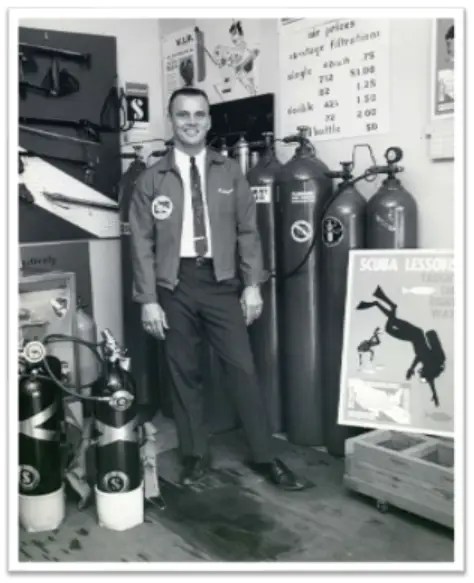
1970: Hal Watts of Professional Scuba Association Intl (PSAI) conducted a 108 m /355 ft dive “body recovery” dive at Mystery Sink using Heliox 16/84—PO2=1.9 and experienced severe “helium bends.”
1975 (November): Court Smith and Lewis Holtzendorff conducted a sneak dive in Wakulla Springs, Florida, on heliox 20/80 to depths of 77 m/250 ft using US Navy Heliox Tables. They both convulsed during their 12 m oxygen decompression stop. Holtzendorff drowned. Smith barely survived.
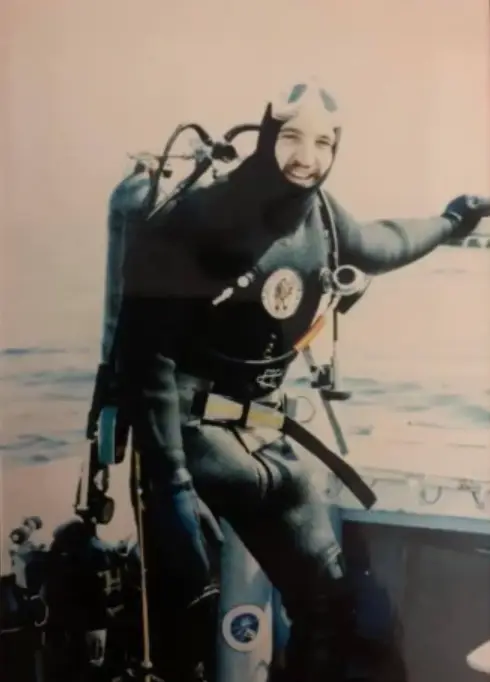
1977: Dave Sutton reported he conducted a mix dive on the oil wreck in the mud hole off the coast of New Jersey to a depth of 51m/165 ft using heliox 20/80 in triple 65 cf. tanks with a 24 cf pony bottle of O2. Having just graduated highschool and with his high school chemistry teacher saying it couldn’t be done, he reportedly used US Navy tables and partial pressure mixing to fill the tanks.
1978: Frank Fogarty and Roger Miller made a successful 100 m/328 ft deep heliox dive in a Missouri sink known as Blue Spring. Both became severely hypothermic during the dive, which pointed out the challenges of diving with helium.
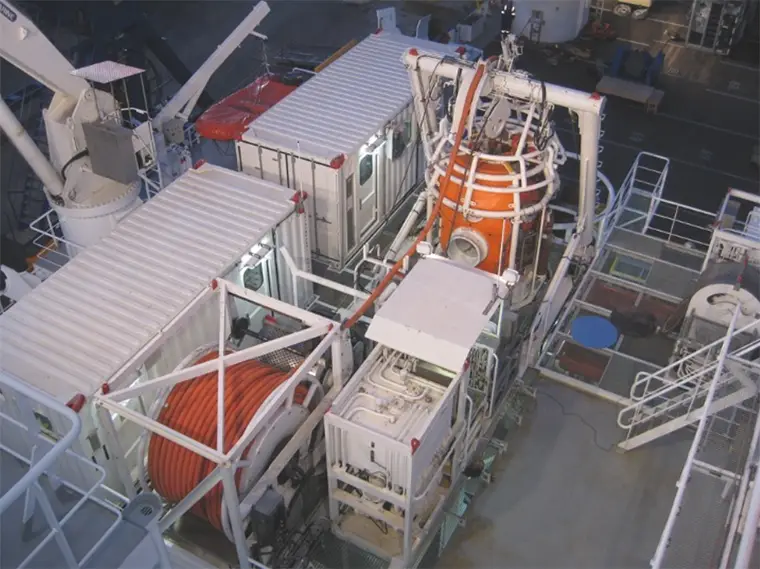
1980s-1990s: Operational saturation dives supporting the offshore oil and gas industry, reaching depths of approximately 305 m/1,000 feet, were conducted in such locations as the North Sea, Gulf of Mexico, and West Africa. Helium typically makes up 98-99% of the breathing gas at these depths, with oxygen in the 1.3-1.9% range.
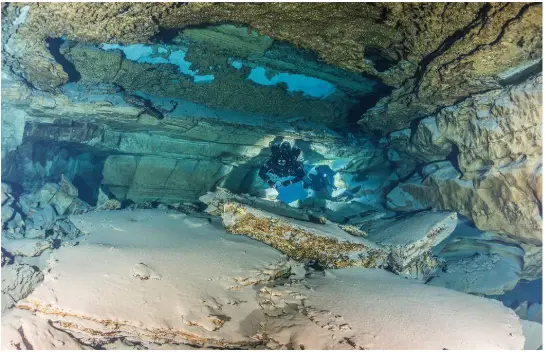
1980: Cave explorer Dale Sweet, made a successful trimix dive to 110 m/360 ft to the Flag Room in Diepolder #2, Florida at a time when mixed gas had a bad reputation based on the community’s past experiences. He returned six months later with explorer Sheck Exley, who conducted the dive on air— his so-called “Salute The Flag” dive.
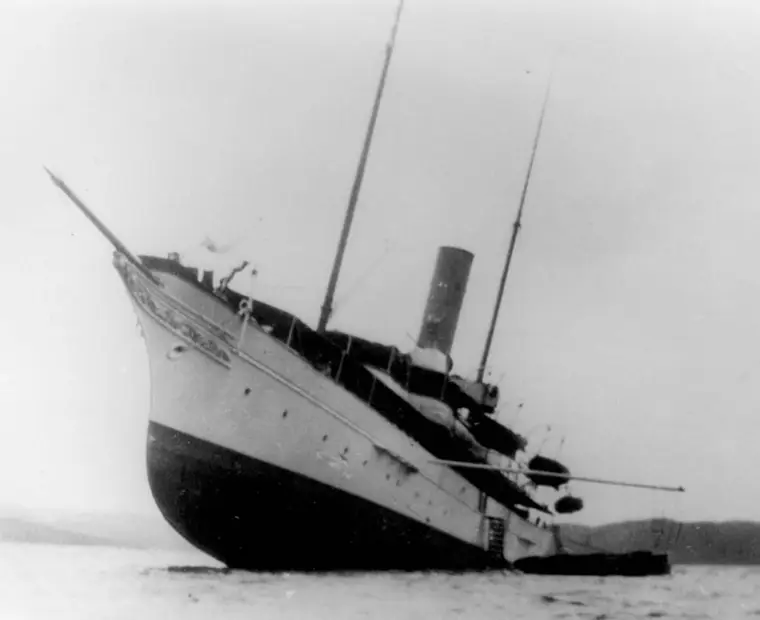
1981: Jerry Buchanon, Bob Horton and Joe Schneeweis conducted a series of open circuit heliox dives on the Gunilda (74 m/240 ft) Lake Superior, Michigan.
1981: Jochen Hasenmayer conducted a 143 m/470 ft heliox dive at Fountain of Vaucluse in France.
1981: Dr. Peter Bennett showed that trimix could ameliorate symptoms of HPNS in chamber dives at Duke University as deep as 685 m/2250 ft.
1983: German cave diver Jochen Hasenmayer set a world record by reaching a depth of 200 m/660 ft in the Fontaine de Vaucluse cave in France using a heliox breathing mixtures and Oceaneering Tables. Over the next decade, he and American cave diver Sheck Exley set a string of deep cave diving records.
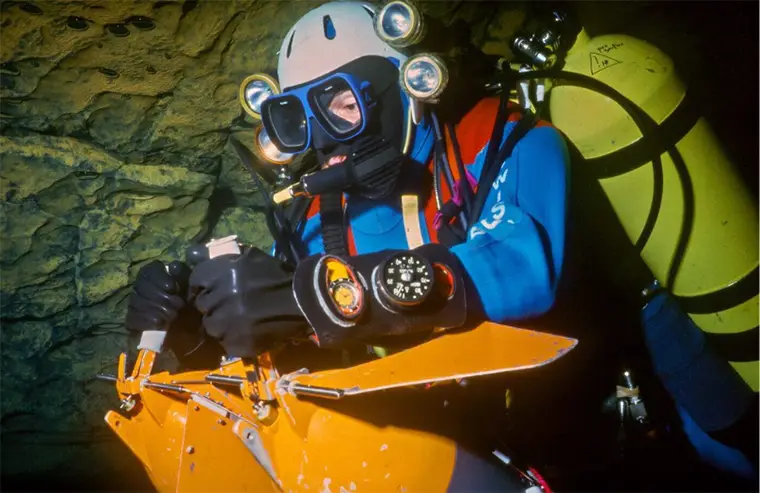
1984: Oliver Isler used a redundant semiclosed rebreather with trimix diluent 20% helium in Doux de Coly, France, using DORIS (French commercial diving company) tables. He modified them to use a 70% nitrox mix for the 12 m/40 ft and pure O2 on his 9 m/30 ft stop. The dive was successful and set a new penetration distance record.
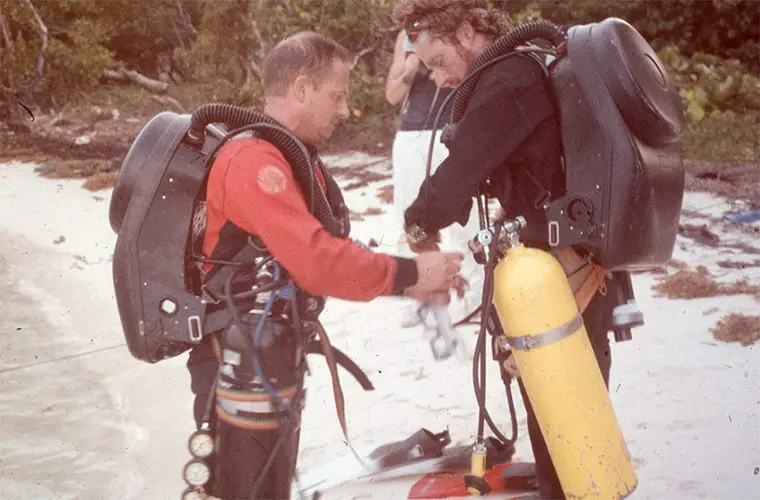
1985: Stuart Clough, principal Carmellon Research, and Rob Palmer explore Andros Blue Holes using open-circuit trimix and Carmellan’s modified MK15.5 rebreathers.
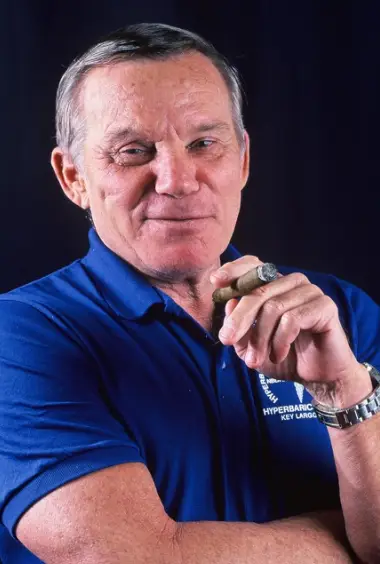
1986: Former NOAA deputy diving director Dick Rutkowski founded the International Association of Nitrox Divers (IAND), which offered the first mixed gas training (nitrox) to sport divers, and later in 1992 became the international Association of Nitrox and technical Divers (IANTD) which offered trimix training.
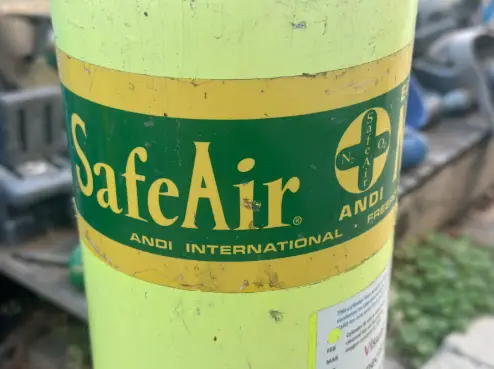
1987: Ed Betts formed American Nitrox Divers Inc. (ANDI) to offer enriched air nitrox, dubbed “SafeAir,” training, and later offered trimix training beginning in 1991.
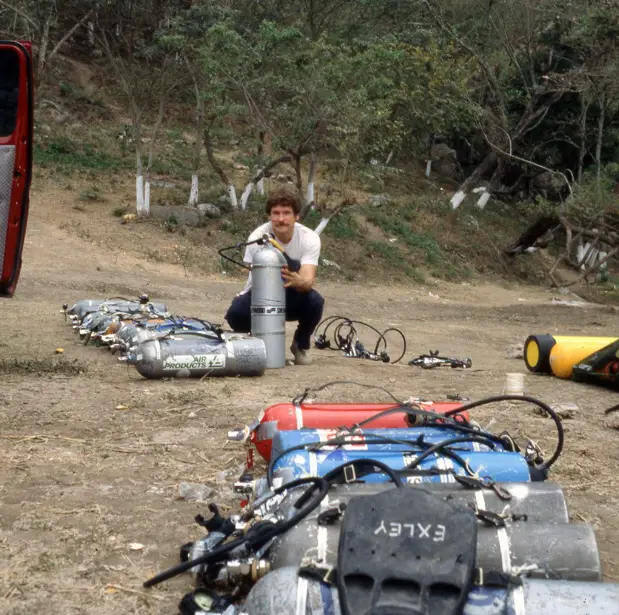
1987: Sheck Exley dove to 158 m/520 ft in Mante, Mexico, using helium-based mixtures and his decompression software Dr.X.
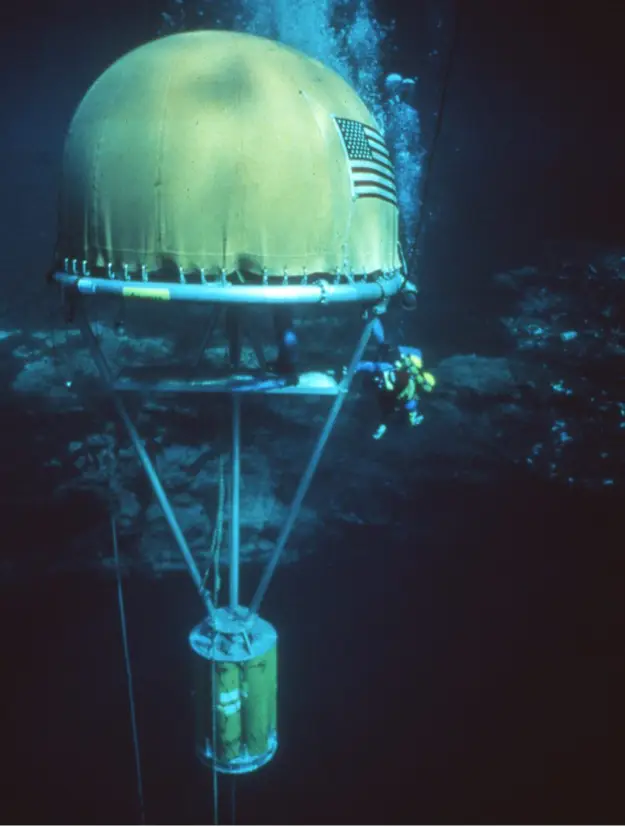
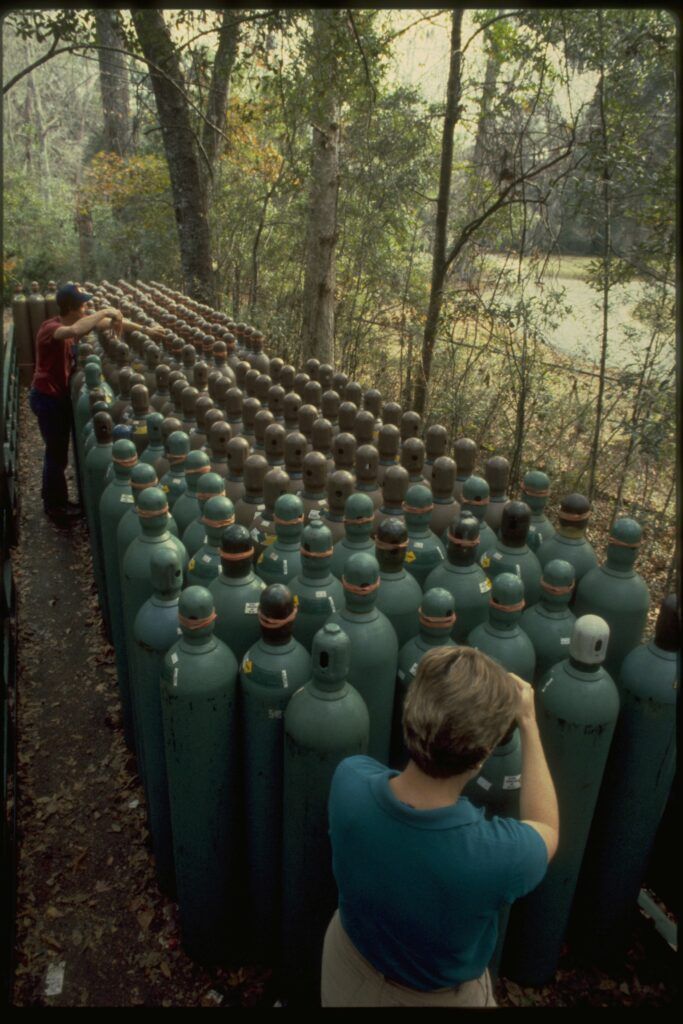
1987: Dr. Bill Stone and his team conducted the Wakulla Springs Project 1987, with sponsorship from Air Products, metaphorically the ‘moonshot’ that launched technical diving. In addition to open circuit helium mix dives, Stone tested his dual redundant rebreather prototype dubbed FRED (Failsafe Rebreather for Exploration Diving) by remaining underwater for 24 hours.
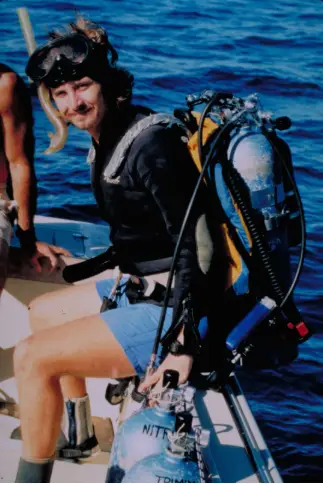
1988: Richard Pyle, Ph.D., of the Bishop Museum in Honolulu, Hawaii began using heliox and trimix to conduct scientific dives off Hawaii. His first major dive was with Chip Boyle in Rarotonga using open circuit equipment. He continued promoting and using helium based gas mixtures for the next 30 years in such research activities as collection of new species, documenting biodiversity, and the study of mesophotic coral ecosystems in the 61-152 m/200-500 ft range, currently using closed circuit rebreathers that he helped develop.
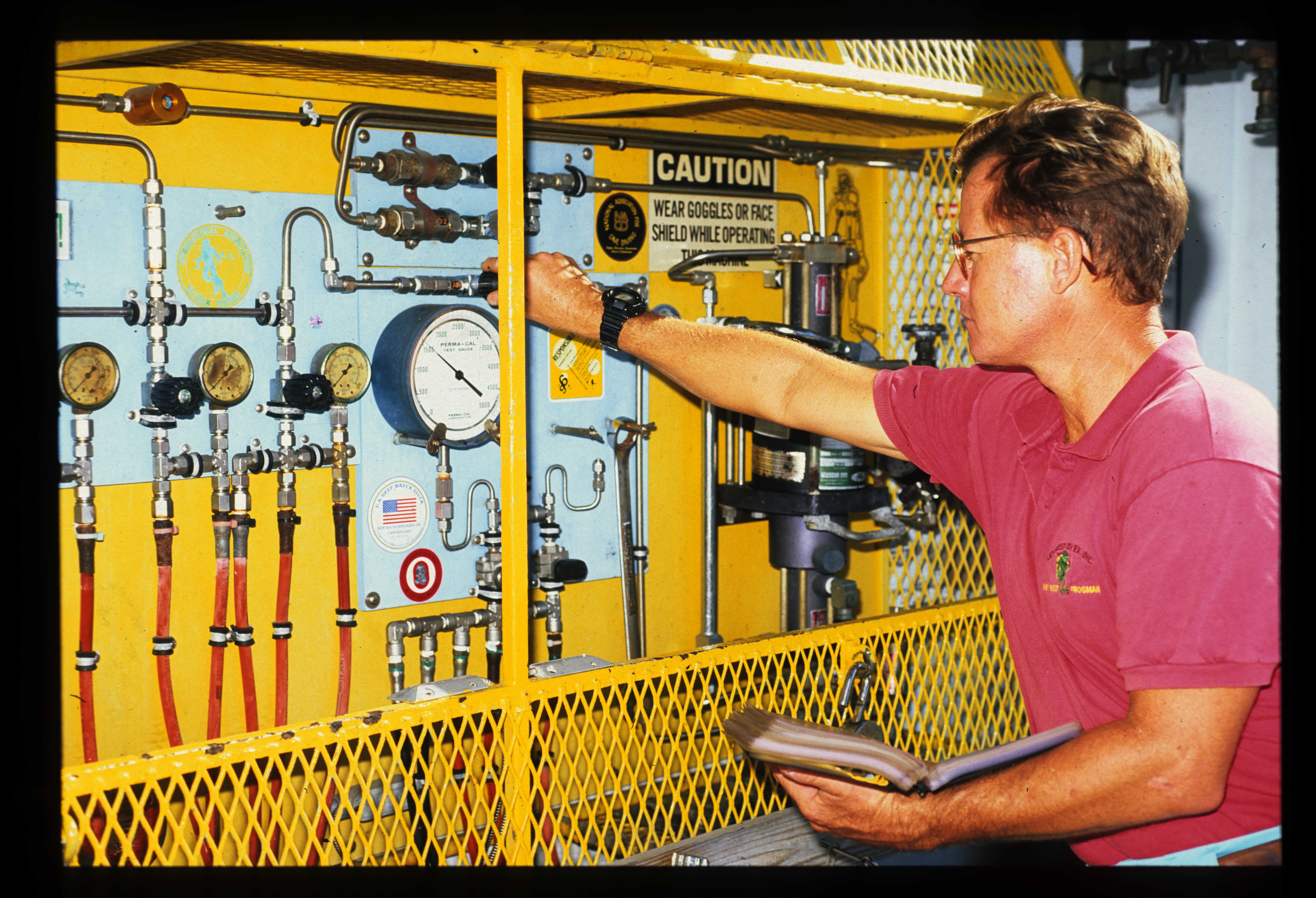
1988: Capt. Billy Deans, owner of Key West Diver, set up the first mixed gas panel for sport divers and began teaching trimix courses. Capt. Deans began using and promoting helium mixes after losing his best friend on a deep air dive on the Andrea Doria.
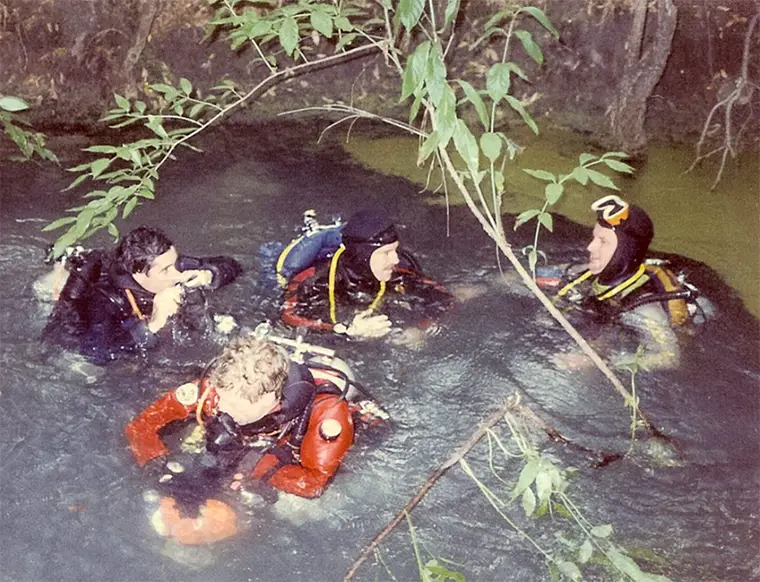
1988 (June 18): Co-founders of Woodville Karst Plain Project (WKPP) Bill Gavin, Lamar English, Bill Main and Parker Turner completed a 2,652 m/ 8,700 ft traverse from Sullivan Sink to Cheryl Sink using trimix breathing mixes and tables created by Dr. RW Bill Hamilton.
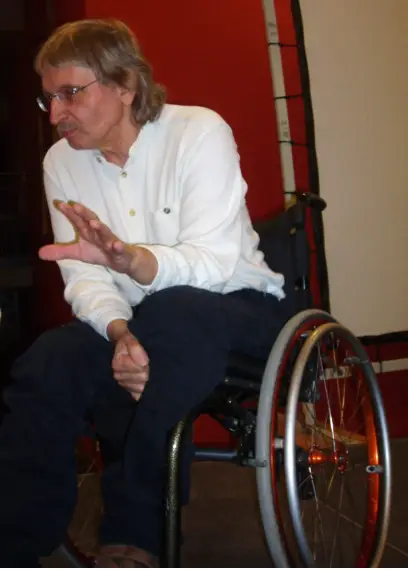
1989: Jochen Hasenmayer suffered severe decompression illness at Lake Wolfgang, Austria, was paralyzed and had to give up diving.
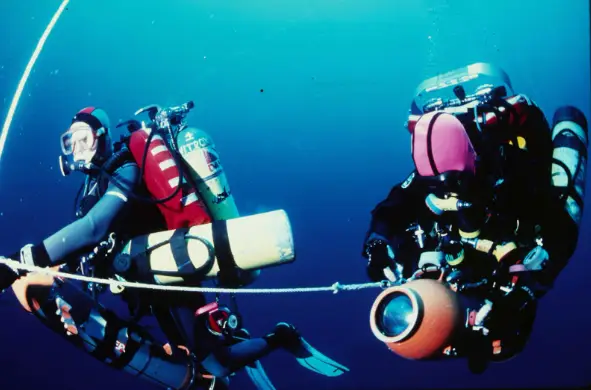
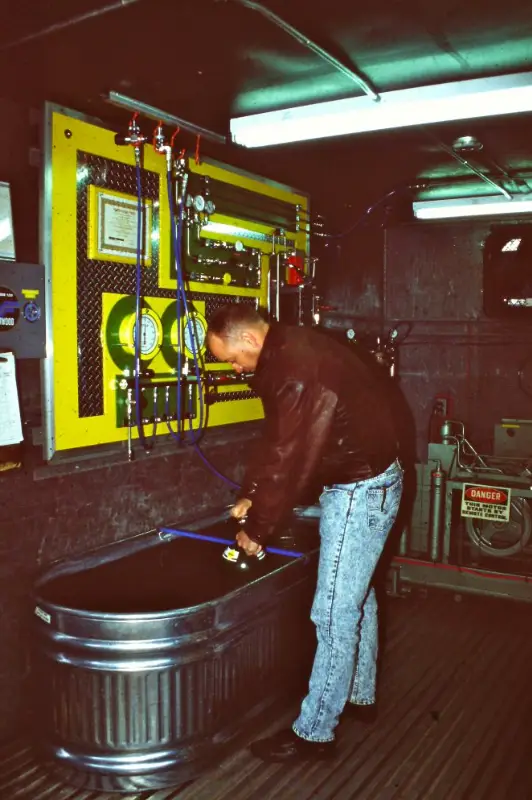
1990: A group of explorers led by Capt Billy Deans, Jim King, Bart Malone, Lou Sarlo and others formed the “Key West Consortium,” which purchased a complete set of trimix tables, aka the Key West Consortium Tables,” created by Dr. RW Bill Hamilton. Ed Betts, ANDI also purchased a set of trimix tables for ANDI use.
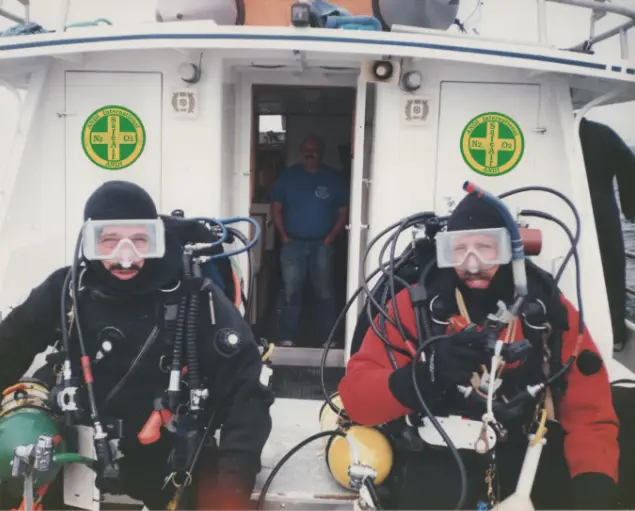
1991: American Nitrox Divers Intl founder Ed Betts and Capt. Wesley Carmen made the first trimix dive on the Andrea Doria from the Sea Hunter which sailed from Freeport Harbor. ANDI certified 40 trimix divers that year.
Click cover to download a copy of MIX
1992: aquaCorps: The Journal for Technical Diving (1990-1996) launched its fourth themed issue, MIX, that focused on mixed gas technology, specifically the use of trimix.
Click logo to see new IANTD logo
1992: Tom Mount joined Rutkowski’s IAND and formed the International Association of Nitrox & Technical Divers (IANTD) and launched the first trimix training program developed by Capt. Billy Deans.
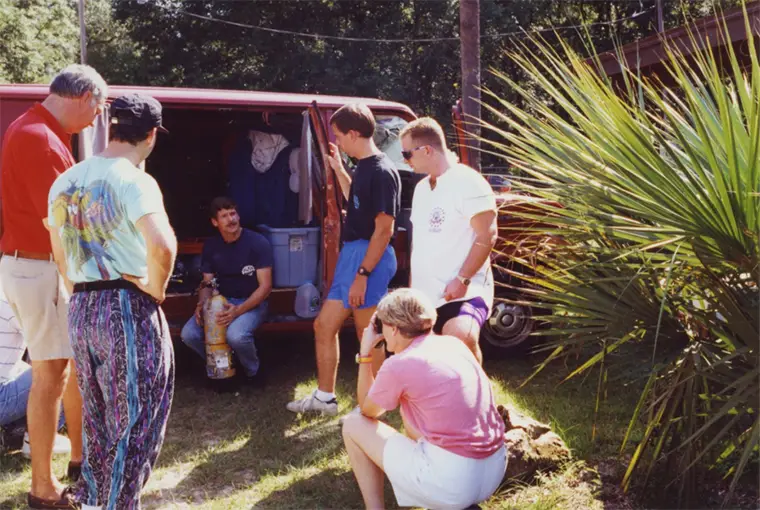
1992-2000: Sport diving training agencies began to offer trimix training to sport divers including; IANTD-1992, ANDI-1991, PSAI-1992, Technical Diving International (TDI)-1994, Global Underwater Explorers (GUE)-1998, National Association of Underwater Instructors (NAUI) in the late 1990s, Professional Association of Diving Instructors (PADI) in 2002, and the BSAC in the early 2000s.
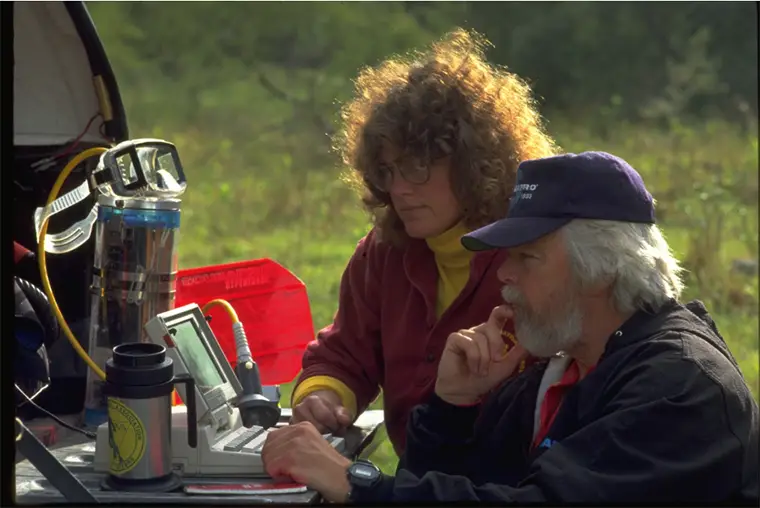
1993: Dr Ann Kristovich set the women’s deep diving record dive to 170 m/554 ft using trimix 10/54 at Zacaton, Mexico.
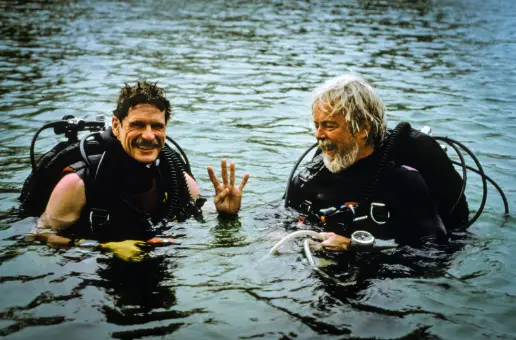
1994 (April 6): Sheck Exley died while attempting a record-breaking dive with Jim Bowden in El Zacatón, a deep sinkhole located in Tamaulipas, Mexico. His objective was to reach a depth of 305 m/1,000 ft but he lost consciousness during the dive. His body was later recovered at a depth of 275m /904 ft.
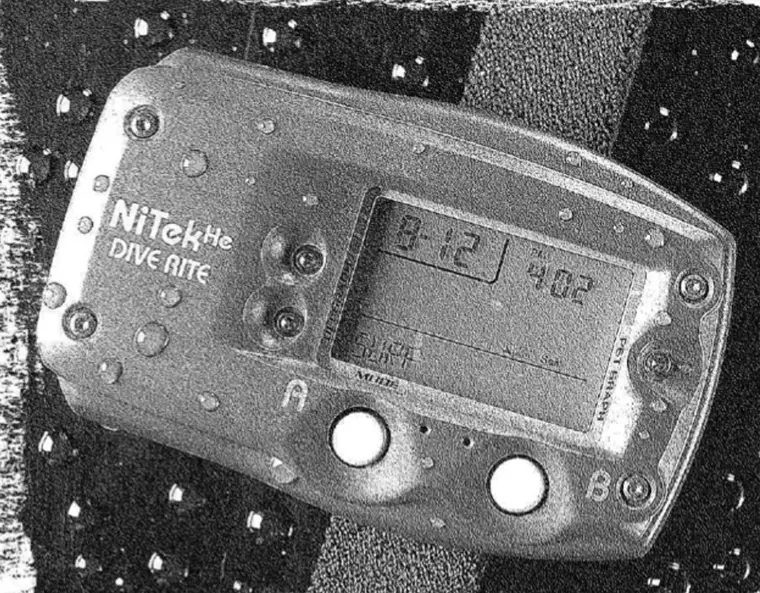
1994: Dive Rite launched the first helium dive computer, the NiTek He.
1995 (AUG): Australian tech diver Tracy Weekly completed her TDI & ANDI trimix courses, making her the first Aussie female to be trimix certified.
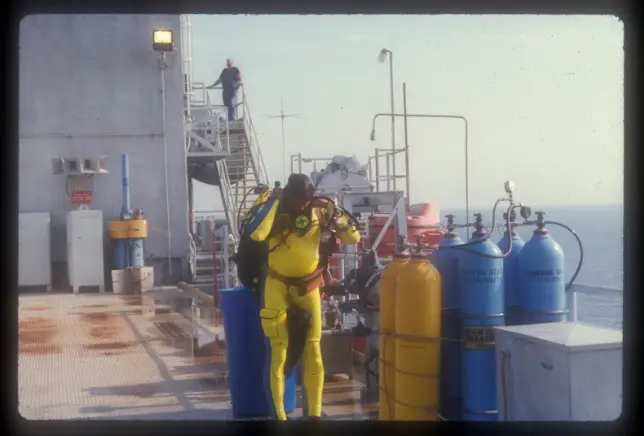
1995: A scientific dive to 76m/250 ft was conducted on an oil rig in the Gulf of Mexico (High Island 389) using open circuit trimix as part of a Florida State University and Texas A&M project. Photo courtesy of Jeffrey Bozanic.
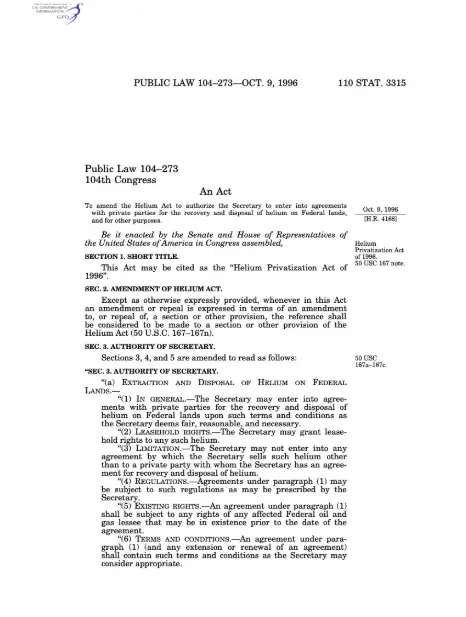
1996: Helium Privatization Act of 1996 authorized U.S. Bureau of Land Management to sell up to 57 m m3 of helium/year and eventually privatize the reserve.
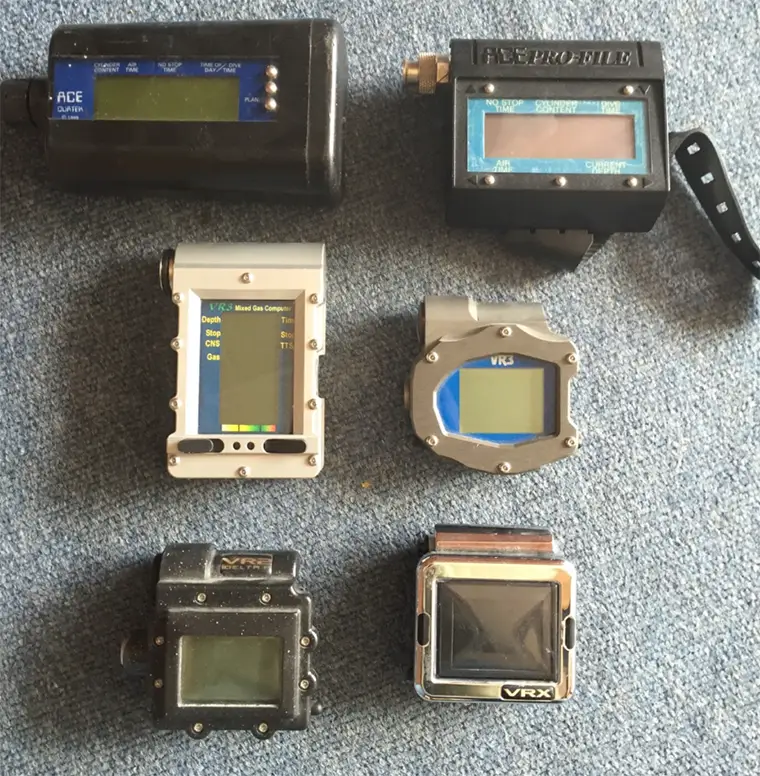
1998: VR Technologies launched its trimix computer, the VR3, one of the first technical diving computers with on-the-fly-gas switching capabilities.
2001: Global Underwater Explorers (GUE) set the standard for a maximum Equivalent Narcotic Depth (END) of 30m for breathing mixes, i.e., divers should use a helium mix beyond 30m! The Corollary? Compressed air is for tires!
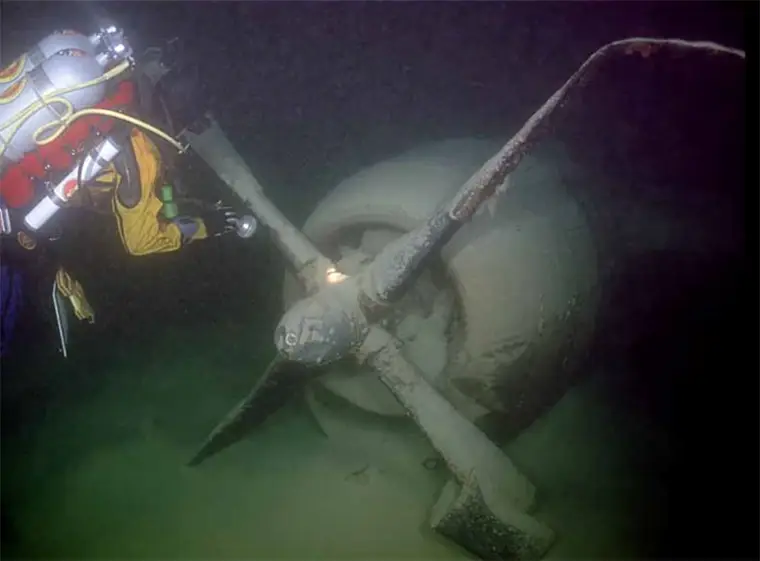
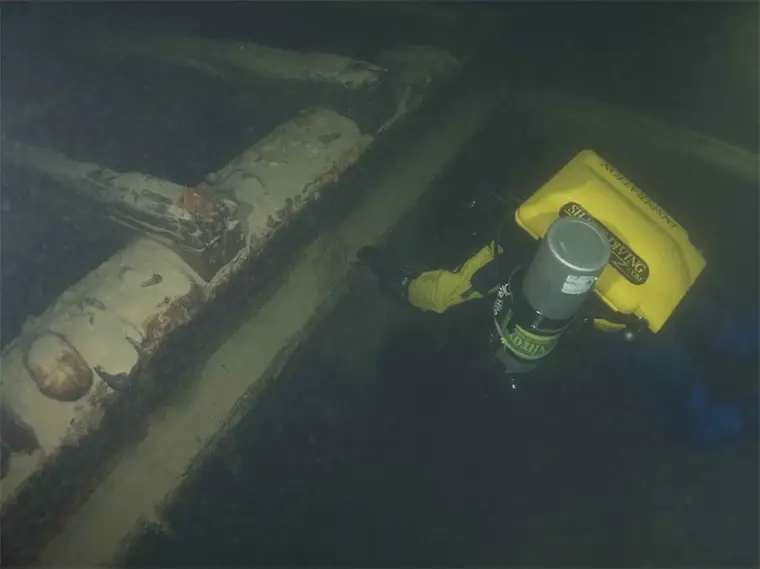
courtesy of the National Park Service,
2002: The Submerged Resources Center of The U.S. National Park Service began training divers to use trimix to conduct underwater archaeological dives in Lake Mead, Arizona, and later extended to other research locations. The five-member dive team of Lake Mead research, using open circuit equipment, initially documented a B-29 that crashed there in 1948 and settled to a depth of 73 m/240 ft. By 2006, the entire team had shifted to using AP Diving Evolution closed circuit rebreathers.

2003: British industrial gas expert John Raquet founded gasworld magazine.
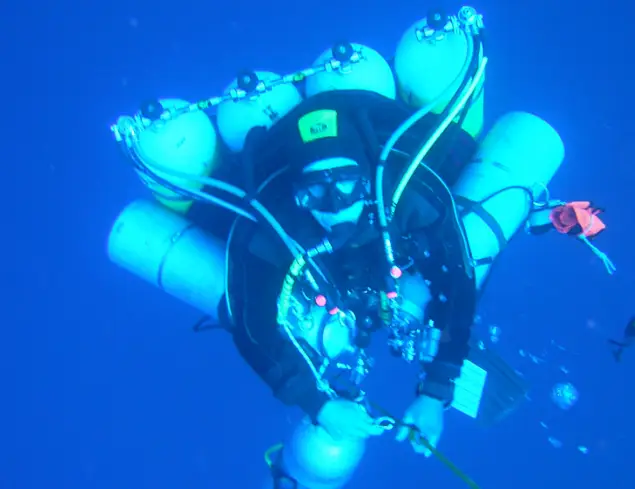
2005: Cave explorer Nuno Gomes set the scuba deep diving record of 318 m/1,044 ft offshore in Dahab, Egypt using open circuit trimix.
2006-2007: Growing demand for helium exceeded the supply, causing a helium shortage. The shortage ended a year later when the Great Recession aka global financial crisis reduced helium demand.
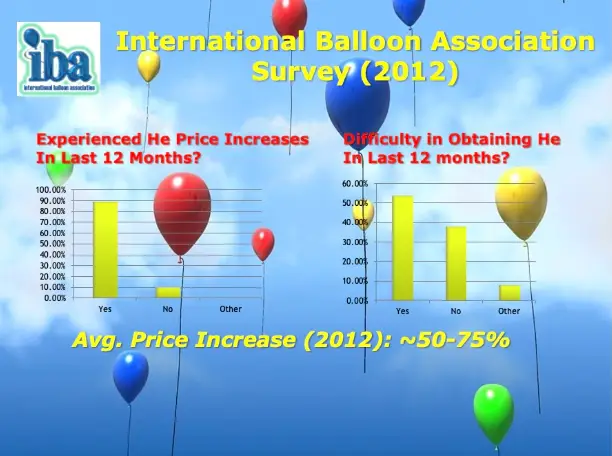
2011-2013: Helium shortage 2.0 caused by demand growth and was popularized by helium-balloon shortages.
2013: gasworld magazine hosted its first Helium Super Summit in London, England.
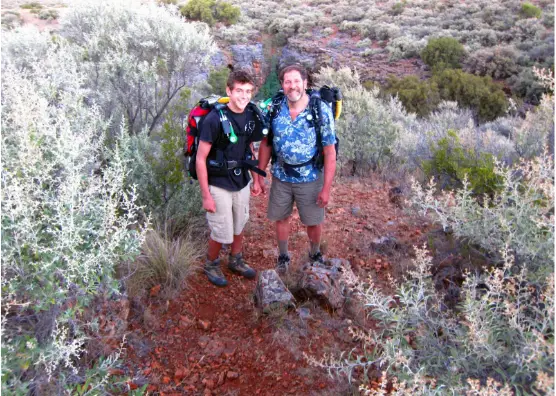
2012: The author and his son Evan Bozanic conducted trimix dives in Boesmansgat, South Africa.
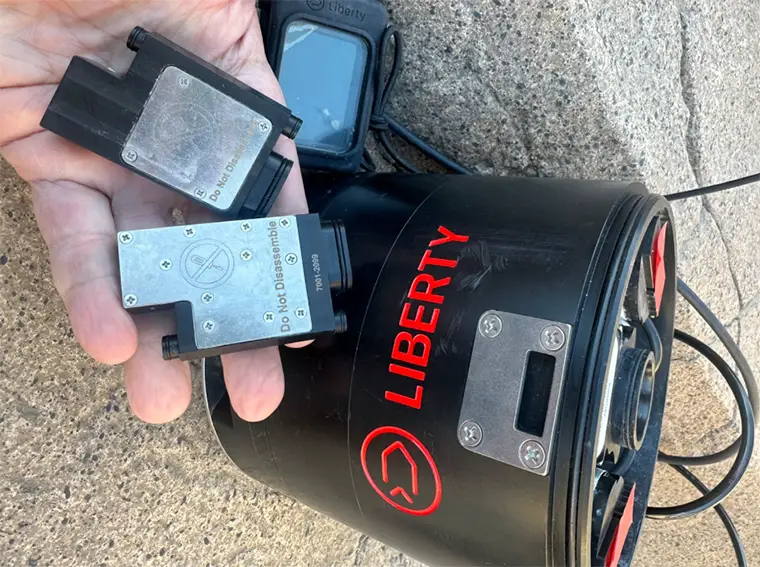
2012: Divesoft designed and patented an acoustic helium sensor and incorporated it in its Liberty closed circuit rebreather.
2013: US Congress passes H.R.527 – Helium Stewardship Act of 2013, seeks to mitigate a helium shortage by enabling the Secretary of the Interior, acting through the Director of the BLM to continue to sell crude helium from the Federal Helium Reserve.
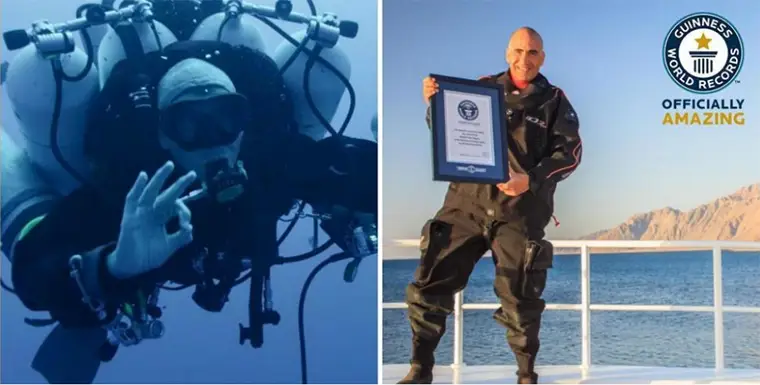
2014 (September 18): Egyptian military diver Ahmed Gabr reportedly conducted a Guiness World Record scuba dive to 332 m/1,090 ft in the Red Sea off the coast of Dahab, Egypt, surpassing Gomes’ 2005 record of 318 m/1,044 ft . However, subsequent released information calls into question whether Gabr actually completed the dive.
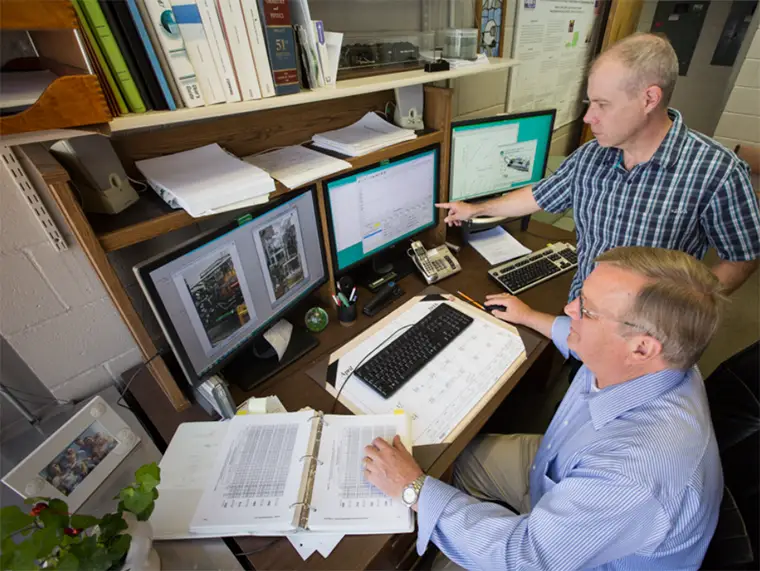
2016: Drs. David Doolette and Wayne Gerth, at NEDU demonstrated that trimix decompression was not more efficient than heliox, suggesting that the “helium penalty” was false.

2018-2020: Helium shortage 3.0, which was supply driven, came to an end when COVID-19 reduced global helium demand.
2022 -2024 (January’22 to January’ 24): Helium Shortage 4.0 was caused by disruptions and delays at several major helium production facilities and lasted two years until large sources came back online.
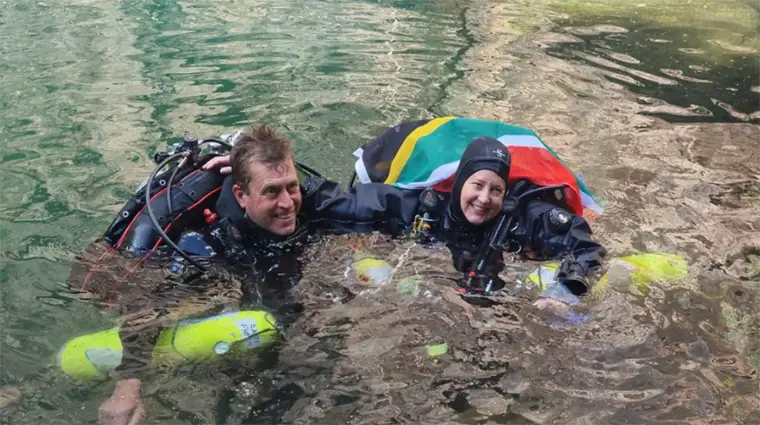
2022 (October 27): Women’s deep cave diving record was set by Karen van den Oever in Boesmansgat Cave, South Africa, descending to 246 m/808 ft.
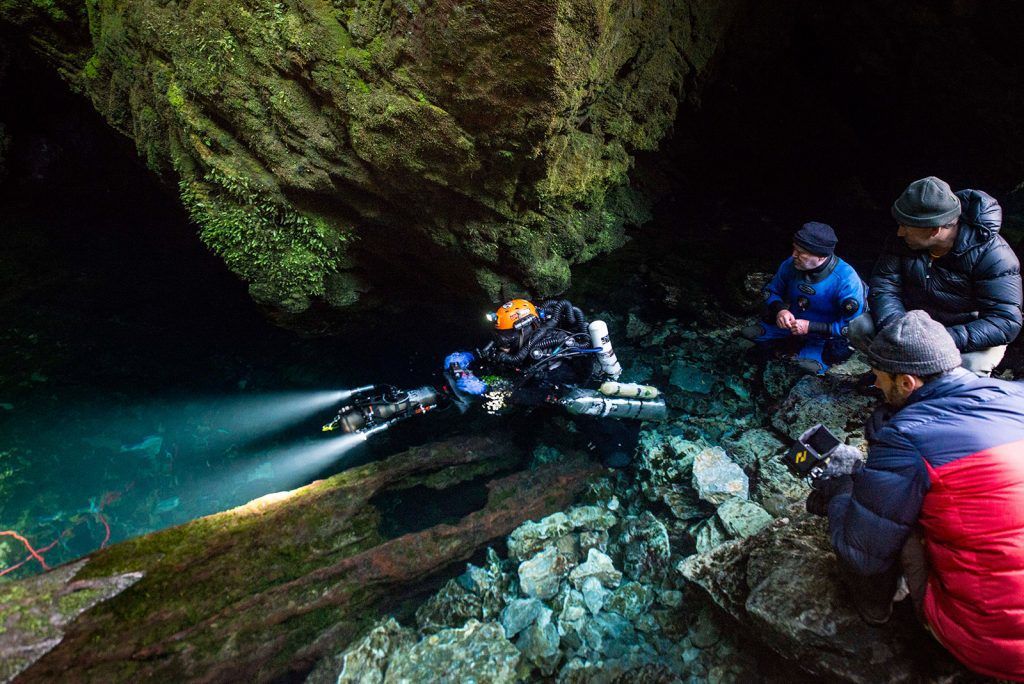
Richard Harris entering Pearse Resurgence. Photo by Simon Mitchell.
2023 (February 14—Valentine’s Day): Dr. Richard ‘Harry’ Harris conducts what is believed to be the first closed circuit Hydreliox (oxygen, hydrogen, helium) dive to a depth of 230m/754 ft at Pearse Resurgence, New Zealand. Hydrogen was used to reduce the gas density.
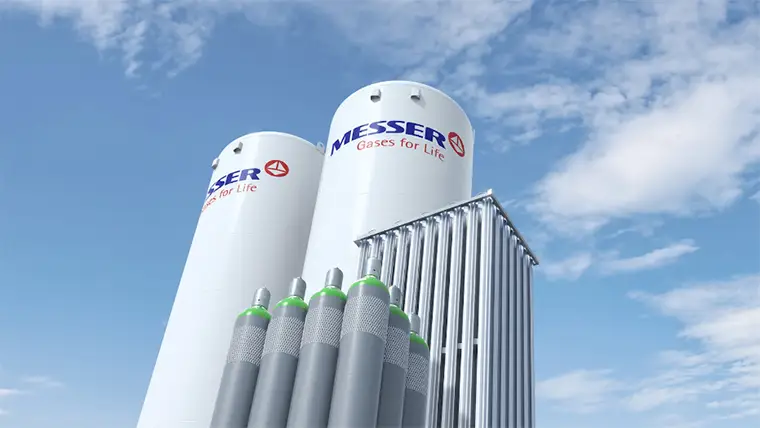
2024 (June 27): The US government completed the sale of the Federal Helium System to Messer Group, the largest privately held industrial gas company in the world. The Federal Helium System includes the Federal Helium Reserve, the Cliffside Field with its wells and gathering system, the 423-mile-long crude helium pipeline, and additional operational assets.
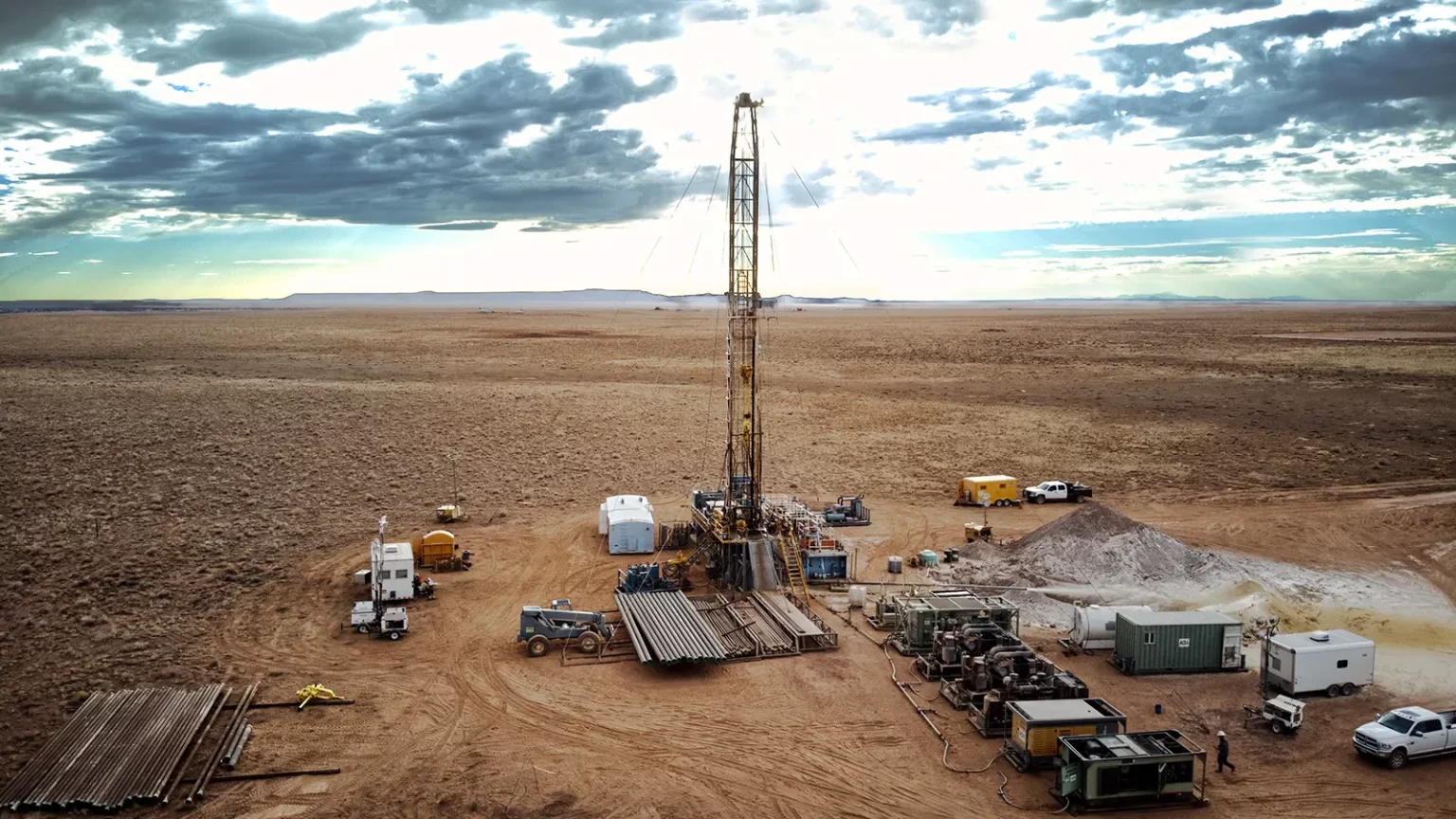
2024: gasworld held its annual Helium Super Summit following the end of Helium Shortage 4.0 and issued its annual Global Helium edition. According to Kornbluth Consulting LLC, helium suppliers produced approximately 6.5 bcf globally in 2024 valued at approximately US$2.68 billion assuming US$400/mcf at the source. End user value was significantly higher. By the end of the year, there were more than 60 companies, including many start-ups searching for helium in Australia, Europe, North America, South Africa and Tanzania. ###
There are many, many more milestones and people I could have referenced in this article, especially during the last 40 years. Deep diving records, which once stood for decades, are now being broken regularly, sometimes monthly. New uses of helium in diving came fast and furious, as did the application of new modes of diving and diving technology. Unfortunately, I do not have the room to add them all.
And now, at the beginning of 2025, we find ourselves in the sport diving community regularly using trimix or heliox with open circuit scuba equipment and rebreathers. Our objectives range from relatively small quantities of helium to reduce narcosis in “shallow” dives of 24-40 m/80-130ft to gas mixtures comprised primarily of helium for deep dives exceeding 305m/1,000 ft.
Scientific divers regularly use helium-based mixtures to conduct research dives. Even public safety divers are using these tools for evidentiary collection and other tasks. And, of course, military and commercial divers continue to use helium in salvage and commercial diving operations. It has been an eventful century, and I am glad to be one of the beneficiaries of all of those who experimented with and developed the equipment and procedures we use today—Jeff Bozanic

DIVE DEEPER
InDEPTH: The First Helium-based Mix Dives Conducted by Pre-Tech Explorers (1967-1988) by Dr. Christopher Werner
InDEPTH: The Santa Barbara Helium Rush—The Legacy Of Dan Wilson’s 400-foot Gas Dive By Don Barthelmess
gasworld: (Video): Helium market outlook: supply, challenges and projections with Phil Kornbluth, The Founder and President of Kornbluth Helium Consulting, discusses what the future holds for the helium market, on gasworld’s Helium: Navigating Turbulence webinar.
InDEPTH: The Helium Outlook by Ashley Stewart
InDEPTH: Helium Market Unveiled: Insights from 2024 Helium Super Summit
InDEPTH: Helium Super Summit 2023 Recap
SCUBA Digital: The Future Of Helium Is Up In The Air Talk by Michael Menduno
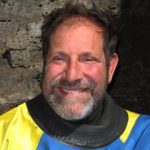
Jeffrey Bozanic is a technical diving instructor and research scientist. Based in southern California, Jeff provides consulting and training services in the diving market. Specializing in rebreather use, he is probably best known for his seminal textbook on the topic, Mastering Rebreathers, and his work as senior Technical Editor for the 6th Edition of the NOAA Diving Manual.
A marine scientist, Jeff has participated or led over 60 diving expeditions during the past 40 years, to places like Palau, Africa, Tonga, and Mexico. From 1989-1992 he oversaw scientific diving operations in Antarctica for the U.S. Antarctic Program, including co-authoring the Antarctic Scientific Diving Manual. In 2016, he was part of a research team that tested and evaluated rebreathers in Antarctica for the National Science Foundation.
Jeff has served on many boards, including as NSS-CDS Chairman, NAUI Vice Chairman, and AAUS Treasurer. He has been honored with the NAUI Lifetime Achievement Award, DAN/Rolex Diver of the Year, AAUS Conrad Limbaugh Award for Scientific Diving Leadership, and the NOGI in Sports/Education.
He can be reached at: P.O. Box 3448, Huntington Beach, CA 92605; 714-747-2727, [email protected].

